PYRAMINE INVESTMENT INC GUIDE TO DOING BUSINESS IN CANADA


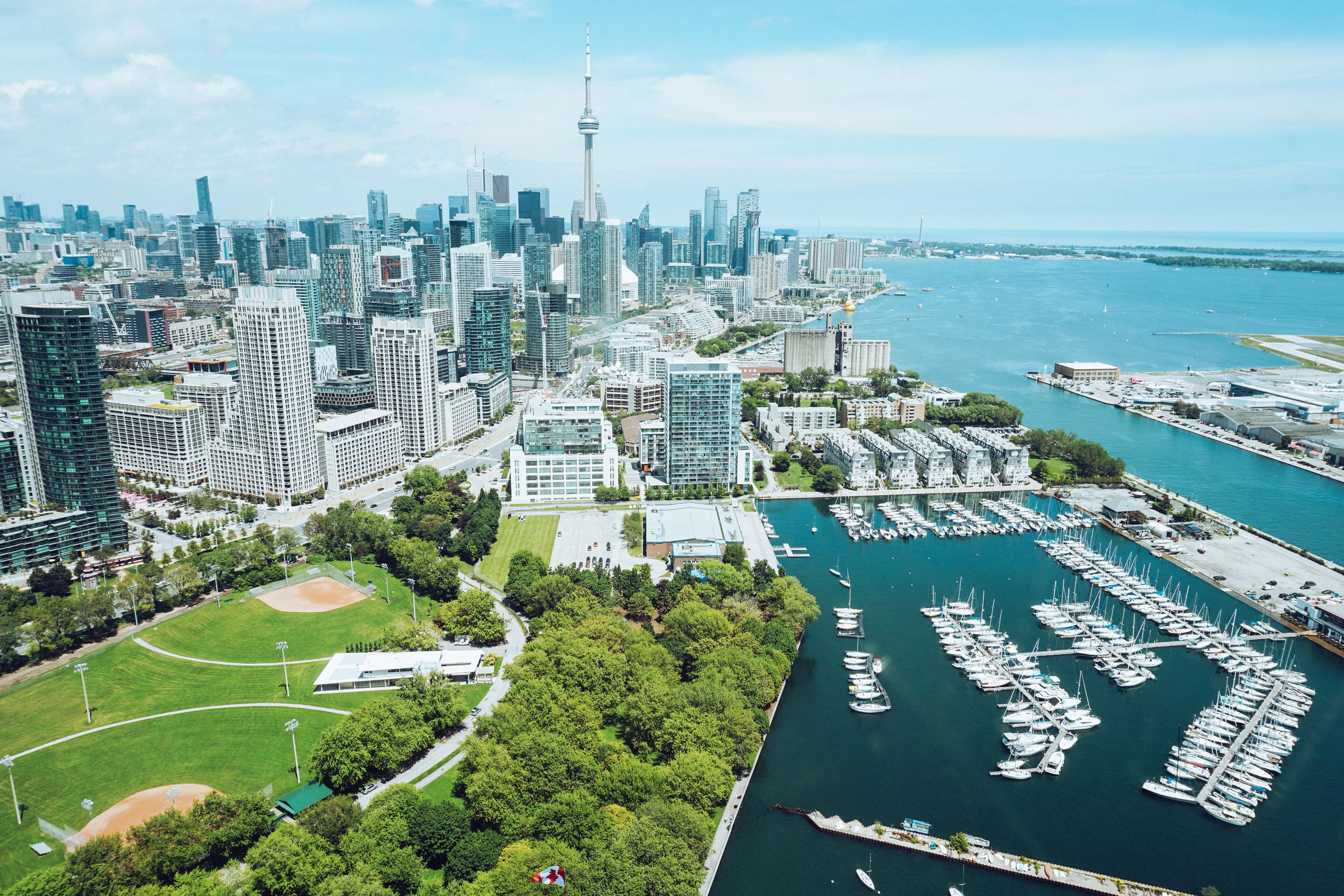
CONTENTS About Pyramine Investment INC...4 - Our Role / Mission ..........5 Meet our Team ..........................6 President's Message ...................9 Why do Business In Canada... .11 About Canada.... ..........14 -Provinces & Territories.....16 -Economy..........................22 -Women's Participation......23 -Diversity.........................24 -Government.....................25 -Export & Import.... ...29 -Investment.......................31 -Trade Key Sectors ............32 Immigration . ..38 - Why Immigrate to Canada ... ..39 - Demographics ........................41 - Canada Health Care ................42 - Education ..............................43 -Our Immigration Professionals 44 Canada Land Types . ...47 Agriculture ......................................48 Construction & Infrastructure ...........50 Our Projects ....................................53


Pyramine Is A Canadian Company Established In 2018 By A Group Of Real Estate Investors With More Than 70 Years In Real Estate Investing.
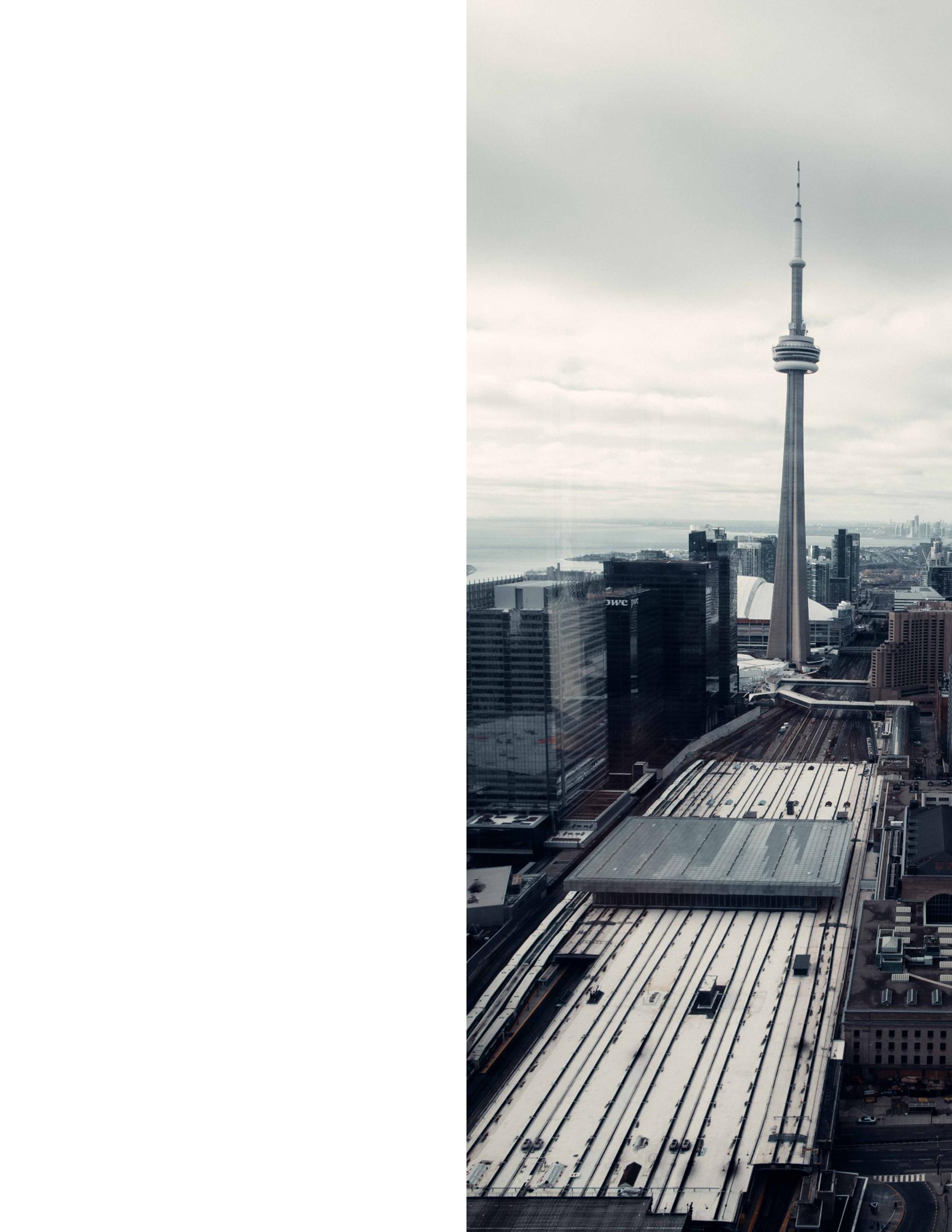
Our Senior Management Team Has Both Proven Experience And An Outstanding Track Record. That’s One Of Many Unparalleled Features That Separate Pyramine From Other Investment Firms In The Industry.
We Understand The Real Estate Market In And Out. We Realize The Exceptional And Undervalued Real Estate Opportunities And Offer It To Our Investors.
Pyramine Has Introduced A “Building Wealth Scheme” To Private Equity And Has Created “Unique Real Estate Investments” That Can Help Everyone Achieve Their Financial Goals.
Please visit the Blogs page of the PYRAMINE's website (www.pyramineinvestment.com) for other resources such as sector profiles, studies, and market intelligence reports.
Canada Office : 30 Eglinton Ave W Mississauga,ON L5R 3E7 1-647-564-4000
Dubai Office : Amna Bin Nasr Building - Al Marar Area - Dubai office 14 +971 52 532 4802
ABOUT PYRAMINE INVESTMENT INC
4
Pyramine Core Value
Pyramine's core values are woven into our commitment to developing and strengthening relationships, just as they serve as the foundation for developing and strengthening world-class real estate investment. Our core values define who we are and what we stand for:
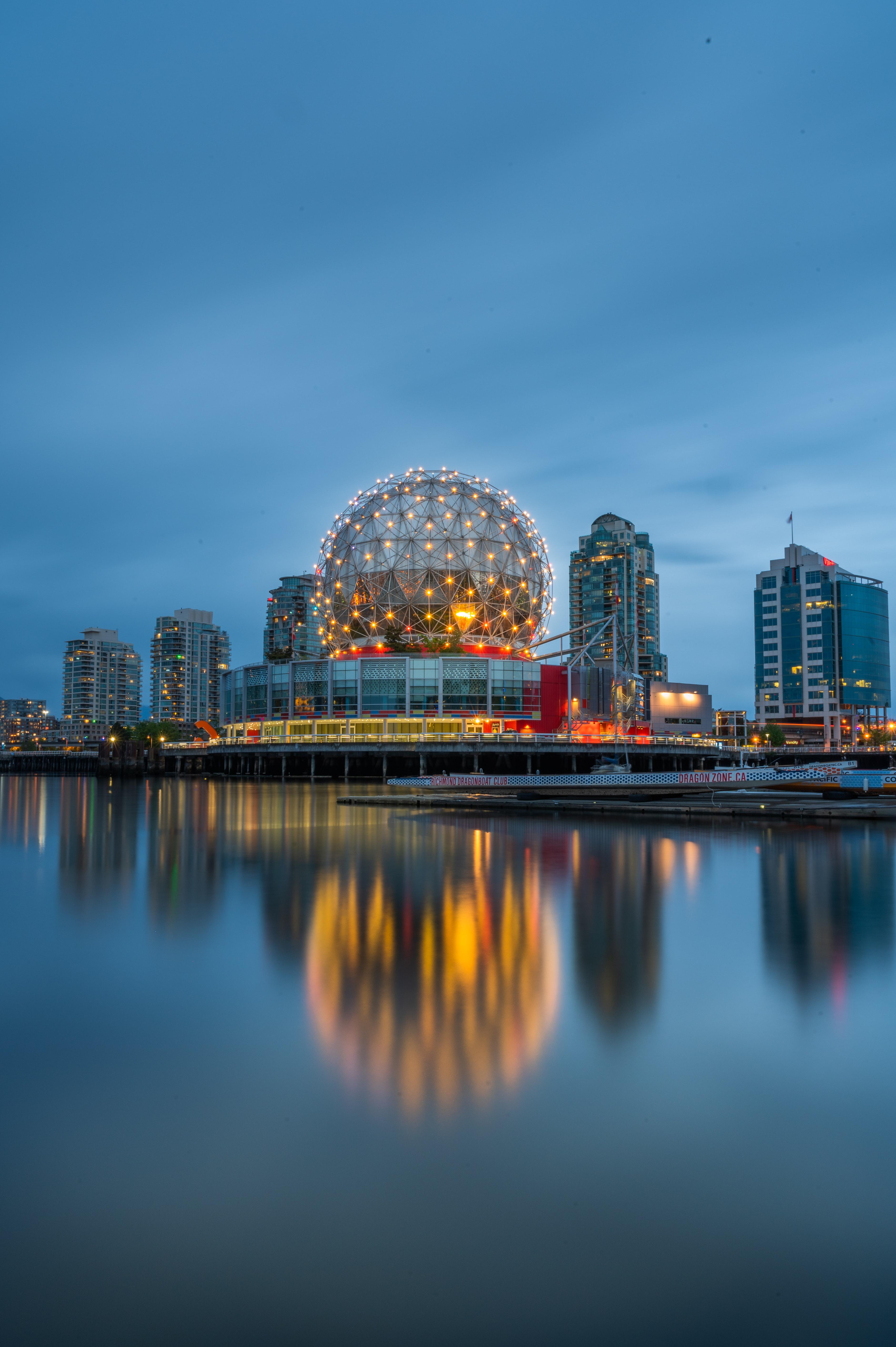
• Extreme Client Service
Our ability to anticipate and exceed clients’ expectations to create a WOW! client experience.
• Community
A family environment based on trust, respect, accountability, and effective communication, as well as a commitment to our community.
• Ethics
We keep our promises.
• Innovation
We develop new solutions through continuous adaptation and creativity in Real Estate Investment World.
• Excellence
We are committed to quality and high performance, ensuring perfect execution.
• Pride
We take personal responsibility for our Investors and Investments in order to drive individual fulfilment.
5
Meet Our Team

6
Hany Adam

Hany Adam, President and CEO of Hany Adam Homes Investment Group, Youmerit Holdings Home Investments Group, and Pyramine Investment based in Mississauga, Ontario Canada is a 40-years residential & amp; commercial real estate industry veteran in both Egypt and Canada and has represented large investors in multiple real estates of residential, Office and industrial space in a wide array of real estate transactions. Hany has built a solid foundation of clients through his real estate broker and investor career
Mohamed Ghoneim
Mohamed has led an impressive career as a Dentist and a Real Estate Investor In his 43 years working in the medical & real estate industry. Mohamed has been recognized by several organizations for his work in the dental space and has also been quoted in various publications.

Fathi AbuFarah
Fathi Abu Farah is a Chartered Professional Accountant from CPA Ontario, Canada and also a Certified Public Accountant from Montana State, United States of America, with over 30 years of post-qualification professional experience. Learn more about our Team


7
There’s no “I” in team. There’s also no “I” in sell. With us, success isn’t a solo effort, and all these people are here to support the purchase of your new home.

Support Team

Accounting & Administration
Whenit’sfinallytimetoclose,thisteamcomesintotakecare ofallthefinaldetails.
Business Partner Yerusalem Berhane



She has experience in managing a wide range of visa applications and undergoes continued professional development programs to keep updated all the time. Her team is proud to provide the highest standards of client service in a friendly environment.





















 Tricia Ironside-Chan Manager, CentralOffice
Stephanie Johnston DealsCo-ordinator, CentralOffice
Deann Archibald DealsCo-ordinator, WestOffice
Leah Samaniego DealsCo-ordinator, DowntownOffice
Melissa Ironside DealsCo-ordinator, CentralOffice
Mary Murray DealsManager, WestOffice
Mathew Aldred AgentServices, WestOffice
Abigail Roberts DealsCo-ordinator, CentralOffice
Kathryn Hume Manager, WestOffice
Lorna Brathwaite DealsCo-ordinator, WestOffice
Galilee Manaois DealsCo-ordinator, CentralOffice
Liana Yeganyan Accounting, CentralOffice
Alisha Rais DealsCo-ordinator, WestOffice
Janet Luong DealsCo-ordinator, CentralOffice
Munim Mushiq Accounting, CentralOffice
Stephanie Kelsey DealsCo-ordinator, WestOffice
Raenae Paton DealsCo-ordinator, CentralOffice
Kazi Islam Accounting, CentralOffice
Kendall MacDonald DealsCo-ordinator, WestOffice
Rowena Mirando DealsCo-ordinator, CentralOffice
Lorraine DeRose DealsCo-ordinator, WestOffice
Madison Leishman Graphic Designer, West Office
Carlos Salas Graphic Designer, Downtown Office
Yoon Kwon Graphic Designer, West Office
Tricia Ironside-Chan Manager, CentralOffice
Stephanie Johnston DealsCo-ordinator, CentralOffice
Deann Archibald DealsCo-ordinator, WestOffice
Leah Samaniego DealsCo-ordinator, DowntownOffice
Melissa Ironside DealsCo-ordinator, CentralOffice
Mary Murray DealsManager, WestOffice
Mathew Aldred AgentServices, WestOffice
Abigail Roberts DealsCo-ordinator, CentralOffice
Kathryn Hume Manager, WestOffice
Lorna Brathwaite DealsCo-ordinator, WestOffice
Galilee Manaois DealsCo-ordinator, CentralOffice
Liana Yeganyan Accounting, CentralOffice
Alisha Rais DealsCo-ordinator, WestOffice
Janet Luong DealsCo-ordinator, CentralOffice
Munim Mushiq Accounting, CentralOffice
Stephanie Kelsey DealsCo-ordinator, WestOffice
Raenae Paton DealsCo-ordinator, CentralOffice
Kazi Islam Accounting, CentralOffice
Kendall MacDonald DealsCo-ordinator, WestOffice
Rowena Mirando DealsCo-ordinator, CentralOffice
Lorraine DeRose DealsCo-ordinator, WestOffice
Madison Leishman Graphic Designer, West Office
Carlos Salas Graphic Designer, Downtown Office
Yoon Kwon Graphic Designer, West Office
8
Alessya Pulera Graphic Designer, West Office
PRESIDENT'S MESSAGE

9
This Guide to Doing Business in Canada is for Professionals, businesses owners and corporations of any size operating in any sector. Readers will learn more about a remarkable country where everyone are already thriving and where there is great potential for others to also succeed. Canada is a market full of opportunities for investments, and expertise.
Pyramine Investment LTD., has developed this booklet as an overview for people interested in the Canada. The Guide is part of a suite of Immigration and business resources that Pyramine has created with input from our founders and relevant subject matters experts in Canada.
I encourage you to access those resources on our website to continue to learn more about the Pyramine Investment and the potential for you, your family and your business.

As the global economy continues to shift and respond to new forces and challenges affecting growth, Canada is uniquely aligned as innovative, open, and forward-thinking nations looking to meet these challenges head on. Looking to the future, there are common focuses in Canada: diversifying international trade, major infrastructure investments, attracting talent, unlocking innovation, and enabling diversification and participation in key sectors, particularly for women. At Pyramine, we see the vast potential for people, further cooperation, and we have the honor of working within a great ecosystem of supports for global businesses. I am grateful to have esteemed and committed members guiding and participating in Pyramine Investment.
Our exemplary executive leadership team, and other passionate volunteers, work alongside our dedicated Pyramine Investment staff to identify, promote, and facilitate opportunities. Furthermore, our partners in the UAE are pillars of the relationship and as such deserve recognition.
I’d like to extend a special thank you to the Canadian embassies and consulate generals for their leadership and contribution to bilateral economic relations.
This is a particularly opportune time for people to consider come to Canada and doing business. Never before has Canada placed as much emphasis on immigration diversification.
The Government of Canada’s goal is to welcome more than 430,000 immigrants to Canada. In 2023, this target will rise to 465,000 new permanent residents (PRs). In 2024, Canada will aim to welcome an additional 485,000 immigrants and in 2025 another 500,000.
I hope you find this Guide useful.
Sincerely,
Hany Adam
Founder and CEO Pyramine Investment Pyramineinvestment.com
10
WHY DO BUSINESS IN


11
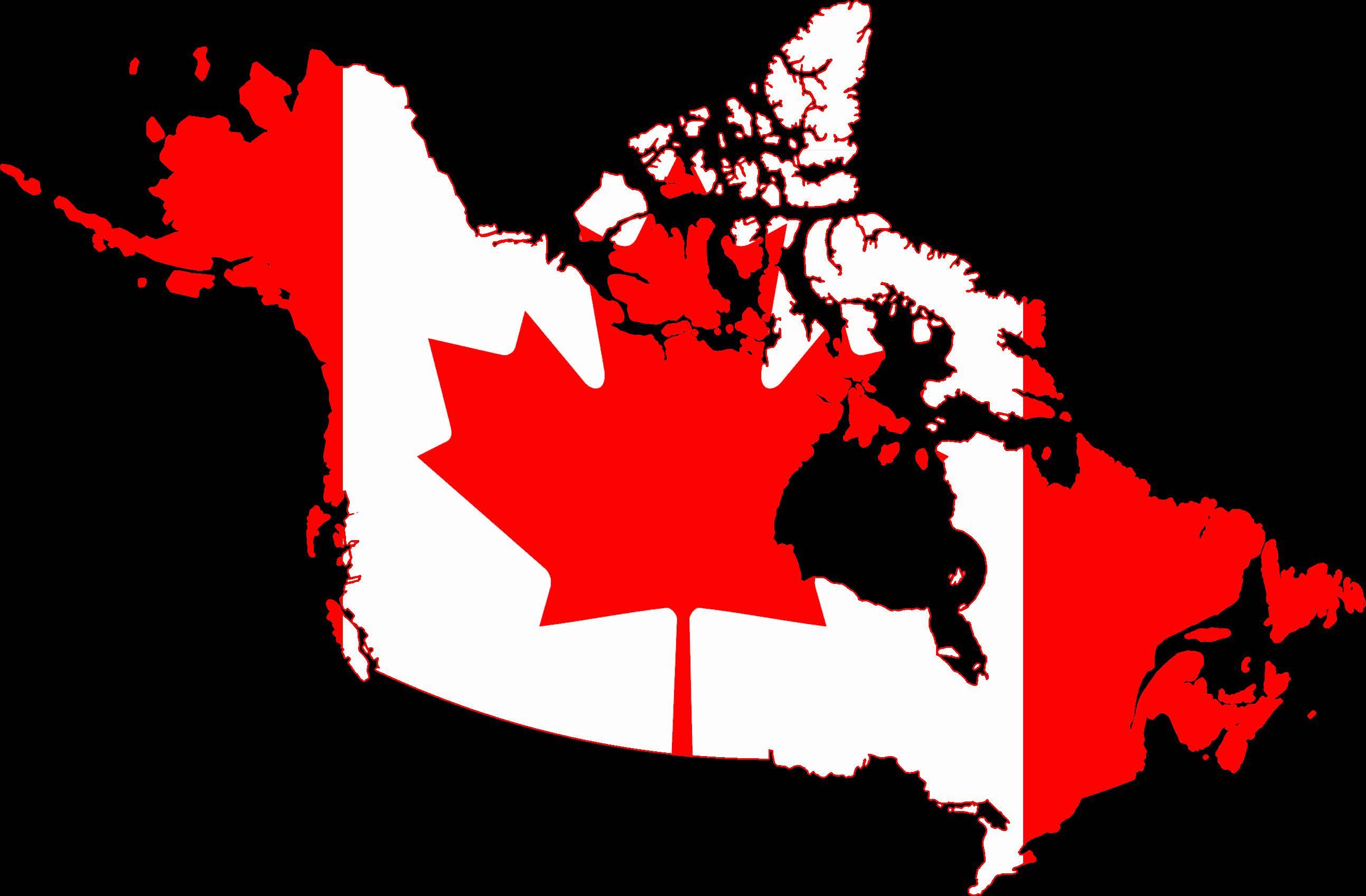

FOUNDED 1867 POLITICAL SYSTEM Parliamentary democracy CAPITAL CITY OTTAWA GEOGRAPHIC AREA 9.985 million KM² POPULATION EST. 38.5 MILLION (2022) WORKFORCE SIZE 20.4 MILLION LANGUAGE OFFICIALLY English / French GDP CAD 2714 TRILLION (AED 7312 BILLION) GDP PER CAPITA CAD 71,000 (AED 191,000) TRADE (AS % OF GDP) 93.8% CURRENCY Canadian Dollar 12
WHY DO BUSINESS IN CANADA?
Educated and Talented Workforce: Canada has a highly educated workforce, with 54.0 per cent of workers having completed post-secondary education. The country is ranked 1st in the OECD for highest share of university or college graduates among working-age population. Canada is also 1st in the G7 for higher-education sector research and development performance, and for the number of qualified engineers in its workforce. Canada ranks 6th in the world in attracting talent. Canada has the fastest growing tech market in North America (in Toronto) largely due to its ability to attract and retain talent.
A World Leader in Science, Technology, and Innovation: Canada launched the Innovation and Skills Plan in 2017 to further invest in the ecosystem and skills rquired for a competitive economy. A catalyst for growth is the Innovation Super-clusters Initiative, which brings together industry, academia, government, and non-profits in the fields of digital technology, protein industries, advanced manufacturing, AIpowered supply chains, and ocean technologies. Canada also has over 120 incubators and accelerators including the largest incubator in the North America.
Attractive Incentives: Canada has various incentives that offer businesses tax credits,
grants, and investments. Canada’s Fall 2018 Economic Statement introduced several measures, including a marginal effective tax rate (METR) to encourage investment into new technologies in manufacturing and clean energy.
A Gateway to the World: Canada’s trade network gives companies preferred access to diverse markets all over the world. Through 14 trade agreements, Canada has preferential market access to more than 50 countries: nearly 1.5 billion consumers with a combined gross domestic product of US$49.3 trillion (C$65.5 trillion).
AFriendly Business Environment:Canada ranks 1st in the G7 and 2nd in the OECD in the time it takes to start a business; and, it ranks 1st in the G7 for the lowest total effective tax. In addition, new immigration programs offer rapid processing visas for skilled labour making setting up a business easier.
Quality of Life: Canada ranks 1st in the G7 for living conditions and quality of life. The country is known for its afford ability, job market, family friendliness, nature, public healthcare, quality education system, safety, political stability, multiculturalism, arts and culture, and premium recreation facilities and sport programs.
13
ABOUT CANADA


14
• Political stability Canada is first among G7 countries in terms of political stability.
• Sound banking system Canada has the top six safest banks in North America. These same six banks are ranked among the top 35 in the Global Top 50 of the world's safest banks.
• Low Corruption Canada ranks 3rd in the G7 and 13th globally on the Corruption Perceptions Index 2021.
• Strategic innovation fund bolsters business investments in Canada's most dynamic and innovative sectors by supporting business activities such as: R&D projects / Firm expansion / Attraction of large-scale investments
• The first-in-the-world Pan-Canadian Artificial Intelligence (AI) Strategy is establishing clusters of scientific excellence, develop global thought leadership on AI’s economic, ethical and legal implications, and support the national AI research community.
• #1 Best quality of life Canada offers the perfect space to live, work and play.
• Canada has six cities among the world's top 100 best cities: Toronto #13 - Vancouver #34 - Montreal #41 - Calgary #47 - Ottawa #67 - Edmonton #76
• Highly skilled talent Canada is the most educated workforce in the world with nearly 62% of Canadians aged 25-64 having graduated from tertiary education institutions.
• Global market access Canada gives investors preferential market access through 14 trade agreements to 49 countries with nearly 1.5 billion consumers and a combined GDP of US$60 trillion.
• Ranked 38th in population, Canada punches well above its weight. As of the end of 2020, Canada had the world’s 13th largest economy (in terms of FDI inflows).
• Transport infrastructure Canada is well placed to serve as a central hub for global trade. Our air transport infrastructure is the best in the world and our coastal ports provide direct maritime access to Asia, Europe and South America. The Great Lakes also provide easy access to the U.S
• 13 International airports (43 airports of entry) • 17 Seaports • 117 Border crossings to the USA • 38.53M people • 2.8M+ STEM graduates • 3rd in G7 FDI inflows in 2020 • 9th largest economy
15
16
industries based on location, resources, and workforce expertise. C D
F E G H I
H
A I D L
B J E M G
British Columbia Yukon Northwest Territories Alberta Sasketchewan Nunavut Manitoba
C K F
J K M L Ontario Québec Newfoundland and Labrador New Brunswick Nova Scotia Prince Edward Island
PROVINCES
& TERRITORIES
Canada is a federation of ten provinces and three territories. Each jurisdiction has its own government and different strategic B A
ONTARIO
Population: EST. 15 million (2022) CAD 956.7 million (2021)


GDP :
Ontario is a province in east-central Canada that borders the U.S. and the Great Lakes. It's home to Ottawa, Canada's capital, known for Parliament Hill’s Victorian architecture and the National Gallery, featuring Canadian and indigenous art. Toronto, Ontario's capital, is home to the 553m-high CN Tower, with expansive views from its revolving restaurant, as well as High Park, site of a rare oak Savannah habitat.
17
BIRTISH COLUMBIA
Population: EST. 5.3 million (2022)
CAD 238.8 million (2021) GDP :

British Columbia, Canada's westernmost province, is defined by its Pacific coastline and mountain ranges. Nature areas like Glacier National Park offer hiking and biking trails, as well as campgrounds. Whistler Blackcomb is a major ski resort that hosted the 2010 Winter Olympics. The scenic Sea-to-Sky Highway links Whistler with Vancouver, a city known for its film industry, at the province's southern U.S. border.
NOVA SCOTIA
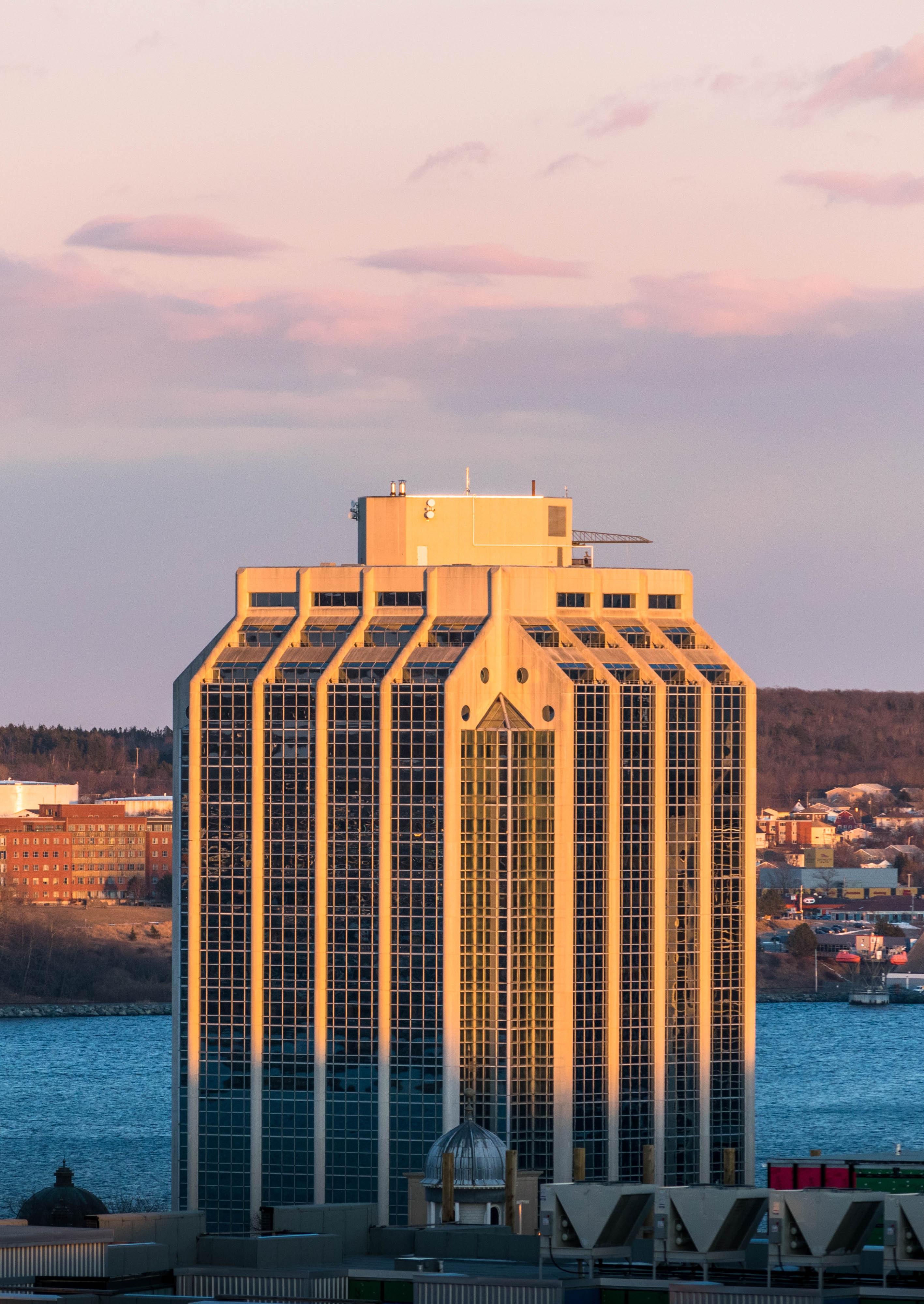
Population: EST. 1 million (2022)
GDP :
CAD 51.9 million (2021)
Nova Scotia is one of the thirteen provinces and territories of Canada. It is one of the three Maritime provinces and one of the four Atlantic provinces. Nova Scotia is Latin for "New Scotland". Most of the population are native English-speakers, and the province's population is 969,383 according to the 2021 Census
18
ALBERTA

Population:
GDP :
EST. 4.54 million (2022)
CAD 338.2 billion(2021)
Alberta is a province in Western Canada. Its landscape encompasses mountains, prairies, desert badlands and vast coniferous forests. It has more than 600 lakes, and rich mineral deposits. In the west, the Canadian Rocky Mountain Parks have glaciers in the Columbia Ice fields. The Waterton Glacier International Peace Park is a biosphere reserve that straddles the southern border with the USA.
SASKATCHEWAN
Population:
GDP :
EST. 1.19 million (2022)
CAD 75.9 billion(2021)
Saskatchewan is a Canadian province that borders the United States to the south. Grassland covers its southern plains, and to the north are the rugged rock of the Canadian Shield plateau, coniferous forests, rivers and lakes. Regina, the provincial capital, is home to the Royal Saskatchewan Museum, with exhibits on natural history and the people of Canada’s First Nations

19
PROVINCES AND TERRITORIES
ONTARIO
Population: 15 Million GDP: C$956.7 Billion
% of Canada’s GDP: 37.9%
Key Industries: Business & Professional/ Technical Services; Finance & Insurance; Technology; Manufacturing.
BRITISH COLUMBIA
Population: 5.3 Million GDP: C$238.8 Billion
% of Canada’s GDP: 12.7%
Key Industries: Key Industries: Business & Professional/Technical Services; Information & Culture Industries; Transportation & Logistics.
QUÉBEC
Population: 8.4 Million GDP: C$355.0 Billion
% of Canada’s GDP: 18.9%
Key Industries: Business & Professional/ Technical Services; Technology; Manufacturing.
ALBERTA
Population: 4.54 Million GDP: C$338.2 Billion
% of Canada’s GDP: 17.4%
Key Industries: Business & Professional/Oil & Gas; Business & Professional/Technical Services; Manufacturing.
MANITOBA
Population: 1.4 Million GDP: C$61.7 Billion
% of Canada’s GDP: 3.3%
Key Industries: Manufacturing; Transportation & Logistics; Agriculture.
NOVA SCOTIA
Population: 1.0 Million GDP: C$51.0 Billion
% of Canada’s GDP: 1.9%
Key Industries: Oceans Science; Information & Culture Industries; Fishing, Aquaculture, & Seafood Processing.
SASKATCHEWAN
Population: 1.19 Million GDP: C$75.9 Billion
% of Canada’s GDP: 4.3%
Key Industries: Oil & Gas; Mining (Potash & Uranium); Agriculture.
NEW BRUNSWICK
Population: 0.8 Million GDP: C$30.1 Billion
% of Canada’s GDP: 1.6%
Key Industries: Manufacturing; Fishing, Aquaculture, & Seafood Processing.
20
NEWFOUNDLAND & LABRADOR
Population: 0.5 Million GDP: C$31.6 Billion
% of Canada’s GDP: 1.6%
Key Industries: Offshore Oil & Gas; Mining (Iron); Fishing, Aquaculture, & Seafood Processing.
YUKON
Population: 0.04 Million
GDP: C$2.6 Billion (AED 7.4 Billion)
% of Canada’s GDP: 0.1%
Key Industries: Mining (Copper, Gold, Silver, Nickel, Lead/Zinc, Iron); Tourism; Fishing, Hunting, Trapping.
NUNAVUT
Population: 0.04 Million
GDP: C$61.7 Billion
% of Canada’s GDP: 0.1%
Key Industries: Mining (Gold, Iron, Diamond, Zinc/Lead); Tourism; Fishing, Hunting, Trapping.
PRINCE EDWARD ISLAND (PEI)
Population: 0.2 Million
GDP: C$5.5 Billion
% of Canada’s GDP: 0.3%
Key Industries: Manufacturing; Agriculture; Fishing, Aquaculture, & Seafood Processing.
NORTHWEST TERRITORIES (NWT)
Population: 0.04 Million GDP: C$4.9 Billion
% of Canada’s GDP: 0.3%
Key Industries: Mining (Diamond, Gold, Tungsten); Oil and Gas; Tourism; Fishing, Hunting, Trapping.
21
ECONOMY
• The economy of Canada is a highly developed mixed-market economy. It is the 8th-largest GDP by nominal and 15th-largest GDP by PPP in the world. As with other developed nations, the country's economy is dominated by the service industry which employs about three quarters of Canadians. Canada has the third-highest total estimated value of natural resources, valued at US$33.98 trillion in 2019.It has the world's third-largest proven oil reserves and is the fourth-largest exporter of crude oil. It is also the fifth-largest exporter of natural gas.

• According to the Corruption Perceptions Index, Canada is perceived as one of the least corrupt countries in the world,and is one of the world's top ten trading nations, with a highly globalized economy. As of 2022, Canada is ranked 15th on The Heritage Foundation's index of economic freedom. Its average household disposable income per capita is "well above" the OECD average. The Toronto Stock Exchange is the eighth-largest stock exchange in the world by market capitalization, listing over 1,500 companies with a combined market capitalization of over US$3 trillion.
• In 2021, Canadian trade in goods and services reached CA$2.016 trillion. Canada's exports totaled over CA$637 billion, while its imported goods were worth over CA$631 billion, of which approximately CA$391 billion originated from the United States, CA $216 billion from non-U. S.sources In 2018
• Canada had a trade deficit in goods of CA$22 billion and a trade deficit in services of CA$25 billion. Canada is unusual among developed countries in the importance of the primary sector, with the logging and energy industries being two of Canada's most important. Canada also has a sizable manufacturing sector, based in Central Canada, with the automobile industry and aircraft industry being especially important
• Canada has the eighth-largest commercial fishing and seafood industry in the world. Canada is one of the global leaders of the entertainment software industry. It is a member of the APEC, G7, G20, OECD and WTO, and was formerly a member of NAFTA until the USMCA came into force in 2020. In Canada, the USMCA is officially known as the Canada–United States–Mexico Agreement (CUSMA) in English and the Accord Canadianisms-Unis Mexique(ACEUM) in French.
22
Women participation in the workforce in Canada is the highest amongst G7 countries. Over the last 40 years, more women in the workforce has accounted for about a third of Canada’s real gross domestic product (GDP) per capita growth. In 2017, Canada had the world’s most educated population and leads Organization for Economic Cooperation and Development (OECD) countries both in share of women holding post-secondary degrees and share of women involved in early-stage firms.

Women-owned businesses account for approximately 18.0 per cent of total businesses in Canada and 12.0 per cent of employment. While women-owned companies contribute over C$117.0 billion annually to Canada’s economy, their smalland medium-sized businesses account for only 11.0 per cent of national export output.
When it comes to leadership and pay equity, Canada has made progress with the federal government prioritizing gender equity. In 2016, Canada introduced the first genderbalanced cabinet in Canadian history and has the highest proportion of female senior civil servants of any G20 country, making it a global leader. However, barriers remain. Less than 3.0 per cent of women head incorporated businesses in Canada, which is half the rate of men. Only one in five directors of large publicly listed companies in Canada are women. Canadian women earned 88.0 cents on the dollar compared to men as measured in hourly wages for full-time workers. In 2018, the federal government launched national pay equity legislation.
23
DIVERSITY AND INCLUSION AS STRENGTHS FOR ECONOMIC GROWTH
There are also more than 200 ethnic and cultural origins represented in Canada’s population. Approximately 32.3 per cent of the population identifies as Canadian, while other large ethnic groups include: English (18.3%), Scottish (13.9%), French (13.6%), Irish (13.4%), German (9.6%), Chinese (5.1%), Italian (4.6%), Indigenous (4.4%), East Indian (4.0%). The other 51.6 per cent is made of diverse groups from various countries. English and French are the official languages of Canada. English is the first language of 56.0 per cent of Canadians and French is the first language of 20.6 per cent of Canadians. The Chinese languages of Mandarin and Cantonese are the top two immigrant mother tongues spoken in Canada. In regards to religious belief, Canadians are Christian (67.0%), Muslim (3.2%), Jewish (1%), Buddhist (1.1%), Hindu (1.5%), and Sikh (1.4%). Approximately 24.0 per cent of the Canadian population has no religion.
Key Initiatives/Steps:
In 2016, nearly 22.0 per cent of Canada’s population was foreign-born, and about 60.0 per cent of new immigrants came from Asia, including the Middle East, and Africa. For the first time, Africa ranked second, ahead of Europe and behind Asia. The majority (60.3%) of these new immigrants were admitted under the economic category, 26.8 per cent were admitted under the family class to join family already in the country, and 11.6 per cent were admitted to Canada as refugees. Generations of foreigners have brought their talents to Canada and have helped build the economy and country. Of the 19.8 million people that make up Canada’s workforce, nearly 5.0 million are landed immigrants. As a country with a low birth rate, immigration has been essential to increasing Canada’s labour market. Thus, the majority of Canada’s immigration policies are focused on attracting workers to fill labour market gaps as well as attracting top global talent to spur economic growth and diversification.
• The Community Support, Multiculturalism, and Anti-Racism Initiatives Program (2018) was launched to build a more integrated, socially cohesive society by building bridges to promote inter-cultural understanding; promoting equal opportunity for individuals of all origins; and promoting citizenship, civic engagement and a healthy democracy. The Program has three funding components: Events, Projects, and Community Capacity Building;
• The multi-year Immigration Levels Plan was introduced by Immigration, Refugees and Citizenship Canada (IRCC) in 2017 and set out targets for 2018-2020 for Canada’s economic, family, refugee, and humanitarian immigration programs. This plan was later replaced in 2018 with IRCC’s immigration levels targets for 2019-2021. Economic immigration accounts for more than half of planned admissions through the multi-year levels plan.
24
GOVERNMENT
There are three main orders of government in Canada: federal, provincial, and municipal.
The federal government focuses on laws and policies impacting the entire country. They have jurisdiction over high-level portfolios, such as foreign affairs, defence, environment, and immigration.
Canada’s federal government consists of three distinct branches:
Executive: The government is the decisionmaking branch made up of the Governor General (who represents the Queen of the United Kingdom), the Prime Minister, and the Cabinet.
Legislative: Made up of the House of Commons and the Senate, this is the lawmaking branch. The House of Commons is comprised of the elected Members of
ECONOMY
Canada’s overall economy is fairly diversified. The country’s largest sector— real estate, rental, and leasing—contributes approximately 12.6 per cent to overall GDP value. This sector, comprised of selling, renting, and buying real estate, showcases the value in Canada’s property and building assets. Canada has become a hotspot for local and international investment in this sector.
The provincial governments focus on laws and policies impacting their individual provinces. Their key portfolios include health and education.
Municipal governments focus on laws and polices impacting their cities and towns. They are responsible for delivering local services such as utilities, public transit, waste management, and police enforcement.
Parliament (MPs). The Senate is made up of senators appointed by the Governor General based on the Prime Minister’s recommendation.
Judicial: There are a series of independent courts interpreting laws passed by the other branches. The Supreme Court of Canada is the highest court of Canada.
The second largest sector in Canada is manufacturing, a cornerstone in the country’s economy that contributes 10.4 per cent to overall GDP. Canada’s key manufacturing sub-sectors include food, transportation equipment, chemicals, and machinery. The country’s manufacturing sector is highly trade dependant and is boosted by Canada’s close trade relationship with the United States, which accounts for 78.7 per cent of Canada’s total manufacturing exports.
1 2 3 56 55 54 25
Canada is the 4th largest producer of oil and 5th largest producer of gas in the world. It is major player in the production of other natural resources such as potash (1st); uranium and niobium (2nd); nickel and aluminum (3rd); cobalt, cadmium, graphite, and sulphur (4th); and diamonds, titanium, and gold (5th). This high level of activity makes mining and oil and gas extraction the third largest sector in the country with a 7.8 per cent GDP contribution. Although Canada is an important contributor in many areas of the resource extraction industry, the majority of the sector is driven by oil, of which Canada has the 3rd largest reserves worldwide.
Construction is the fourth largest sector in Canada, supported by the high demand for real estate and the need for new and improved infrastructure in the country. All major building types (residential, commercial, industrial, and institutional) have seen almost uninterrupted growth over the past two decades in Canada. Within the last five years alone, the value of total building permits has grown by 4.3 per cent. Of course, the key driver for this sector in Canada is infrastructure development. The current federal government has committed C$180.0 billion over 12 years across five priority infrastructure streams: public transit, green building, social, trade and transportation, rural and northern communities. In addition, each provincial and municipal government has its own funds committed to infrastructure improvement and development.
Canada has a highly advanced and robust healthcare system, one that is considered among the best in the world in terms of access and quality. The country has a publicly funded system, meaning government investments are a key driver of the sector’s growth. In 2018 ,the federal government committed C$38.6 billion in health transfers and additional funding for home care, mental health services, and health innovation to the provinces and territories. These transfers are an annual payment that support healthcare across Canada, and they are large reason why healthcare is the fifth largest sector in the country. Canada’s heavy investment into its healthcare system also makes the country of the highest spenders on health among all 36 OECD countries.
The Government of Canada is highly focused on building the use of technology and innovative practices across all sectors. Current programs and funds to boost innovation in Canada exist under the 2017 Innovation and Skills Plan. In 2018, the federal government launched its Innovation Superclusters Initiative, which focuses on areas where Canada has a competitive advantage. These include digital technology, protein industries, advanced manufacturing, AI-powered supply chains, and ocean technologies.
26
TRADE
Canada has a trade-to-GDP ratio of 32.3 per cent, making trade relatively important to the country’s overall economic well being. A large part of Canada’s trade success is derived from its close relationship with the
FREE TRADE AGREEMENTS
Canada’s most vital trade agreement is the North American Free Trade Agreement (NAFTA). This agreement allows free trade between Canada, the USA, and Mexico and also governs various other trade and investment procedures and laws between the three countries. NAFTA has recently been reopened and re-negotiated under a new name: the Canada-United States-Mexico Agreement (CUSMA). It is in the process of being ratified by each country at which time it will replace NAFTA.
Canada’s other key free trade agreements include the Canada-European Union Comprehensive Economic and Trade Agreement (CETA) as well as the
MAJOR MARKETS
Canada’s top markets for export in 2017 were the United States (US$274.0 billion) (C$354.9 billion), China (US$18.4 billion) (C$23.8 billion), Japan (US$9.7 billion) (C$12.6 billion), Mexico (US$8.1 billion) (C$10.5 billion), and the United Kingdom (US$7.5 billion) (C$9.7 billion).
United States, which accounts for 73.0 per cent of its export value and 46.0 per cent of its import value. A key focus for successive Canadian governments has been to diversify its trade relations. Comprehensive and Progressive Agreement for Trans-Pacific Partnership (CPTPP) between Canada and 10 other countries in the AsiaPacific region: Australia, Brunei, Chile, Japan, Malaysia, Mexico, New Zealand, Peru, Singapore, and Vietnam.
Canada also has country-to-country free trade agreements with Chile, Columbia, Costa Rica, Honduras, Israel, Jordan, Korea, Panama, Peru, the Ukraine, and the United States. Canada also has ongoing negotiations for free trade agreements with the Caribbean Community, the Dominican Republic, Guatemala-Nicaragua-El Salvador, India, Japan, Mercosur (the Southern Common Market), Morocco, the Pacific Alliance, and Singapore.
Canada’s top markets for import in 2017 were the United States (US$149.0 billion) (C$193.0 billion), China (US$50.0 billion) (C$64.8 billion), Mexico (US$22.0 billion) (C$28.5 billion), Germany (US$12.3 billion) (C$15.9 billion), and Japan (US$11.7 billion) (C$15.2 billion).
67 68 27
Top Export Markets - Canada
75%
50%
100% 73% 12% 5% 3% 2%2% 1%1%1%1%
25% 0%
United States OtherChinaJapanMexicoUKS.KoreaIndiaGermanyFrance
Source: Observatory of Economic Complexity, 2017
Top Import Markets - Canada
United States
Other
Source: Observatory of Economic Complexity, 2017
China
MexicoJapanGermanyUKS.KoreaItalyGermany 25% 0% 50% 75% 100% 49% 15% 18% 7% 4% 4% 2%2%2%1%
28
EXPORT & IMPORT VALUE & PRODUCTS

In 2017, Canada exported US$377 billion (C$488 billion) and imported US$326 billion (C$422 billion), resulting in a positive trade
INVESTMENT
In 2017, Canada ranked 7th in FDI outflows and 15th in FDI inflows globally, making it a major investor and investee worldwide. The country is home to some of the world’s largest pension funds including the Canada Pension
MAJOR MARKETS FOR INVESTMENT
Canada’s top investor countries (inward stock)in2017weretheUnitedStates(C$404.4 billion) Netherlands(C$91.9billion)
Luxembourg (C$49.9 billion) United Kingdom (C$47.4 billion) and Switzerland (C $40.2 billion)
balance of US$51.2 billion (C$66.3 billion). The top five merchandise products exported from and imported to Canada include: Plan, Cassie de détente et placement dew Quebec, and the Ontario Teachers’ Pension Plan. The Canada Pension Plan is the largest pension fund in Canada and has C $368.5 billion in assets under management. The top destination countries for Canada’s investment (outward stock) in 2017 were the United States (C$504.8 billion) , United Kingdom (C$102.6 billion) , Luxembourg (C$76.9 billion) , Barbados (C$48.9 billion), and Cayman Islands (C$43.1 billion).
29

FDI INFLOWS & OUTFLOWS
UK Netherlands Japan Germany Other Switzerland Luxembourg Brazil China 49% 6% 11% 4% 2% 13% 5% 6% 2% 2%
Other UK Luxembourg Barbados Cayman Islands Bermuda Netherlands Australia Bahamas 45% 4% 9% 4% 2% 20% 4% 7% 3% 2%
Statistics
FDI Inward StockFDI OutflowFDI Outward Stock FDI Inflow C$1,777.7 C$2,024.9 C$1,790.5 C$1,602.8 Foreign Direct Investment Inflows & Outflows - Canada (millions of Canadian dollars ) Source: UNCTAD, World Investment Report, 2018 FDI Outward Stock - Canada FDI Outward Stock - Canada 30
USA
USA
Source:
Canada 2017
Investment
• Global companies invested $75.5 billion in Canada in 2021, bringing foreign direct investment (FDI) to the highest annual total since 2007, a 41% increase over the 10-year average.
• Foreign direct investment (FDI) is a key strategic lever for Canada’s economic development, helping to spur innovation and creating highly skilled and well-paying jobs in communities across the country. Increasingly, global investors look not only to invest, but to put down roots in Canadian communities.
• Invest in Canadaseeks to attract high quality, community focused investments into Canada that deliver long-term, sustainable returns, while remaining true to our fundamental values.
• Manufacturing was the top industry benefiting from FDI, outperforming its historical 10-year average by 46.6% and reaching $19.2 billion. Energy and mining came in second and outpaced its 10-year average by 72.9%, reaching $16.6 billion.
• In 2021, Invest in Canada directly supported projects from all over the world. Top investor countries included the United States, Switzerland and the United Kingdom. For each dollar of GDP generated in the Canadian economy last year, Canada attracted nearly US$0.72 of FDI, higher than both the G20 and OECD averages of US$0.38 and US$0.56 respectively.
TOP INVESTED SECTORS
: • Stocks • ETFs • Mutual funds • Real estate • Cryptocurrencies • Gold Canada top investor countries in 2022 :
Main Investing Countries 2020, in % United States 49.9 United Kingdom 6.1 Japan 4.6 Germany 3.3 Switzerland 3.2 China 3.1 Netherlands 3.0 Brazil 2.3 France 2.3
31
KEY SECTORS OF BILATERAL TRADE AND INVESTMENT
Aerospace Agriculture & Food
Canada is home to more than 700 aerospace companies employing over 85,000 skilled professionals. The country is known for its quality products and training in this sector. The industry exports about 75.0 per cent of its output, including to the Middle East aerospace products and parts was the 2nd largest export category from Canada to the Middle East in 2018 with a value of C$205.0 million. In addition, Canadian aerospace and defense firms have signed million-dollar contracts with the Middle East for training in this sector.
Canada’s agriculture and food sector is a key part of the country’s overall economy. In 2018, crop and animal production contributed C$32.3 billion ( to Canada’s overall GDP, while food processing, Canada’s leading manufacturing sub-sector, contributed $C27.5 billion. The growing population of Canada,and the world, continues to boost the sector’s growth and interest as a priority sector. In 2017, the Government of Canada announced that protein industries (pulses) would be counted as one of the five regional economic super-clusters to receive millions in investment through the Innovative Super-clusters Initiative. In addition to canola and wheat, pulses are a major agriculture export of Canada, and were the 3rd largest export to the Middle East from Canada in 2018.
Clean Technology
Canada has some of the best and brightest minds in this field, whether they are working as academics or building their own innovative technology companies. In 2017, Canada ranked 4th place among global clean technology innovators in the Global Clean tech 100 List. Since 2016, the Government of Canada has been putting policies and plans in place to accelerate Canada’s adoption, and the business opportunity, in this space. This includes the creation of the Pan Canadian Framework on Clean Growth and Climate Change as well as the creation of major federal programs—with strong financial support—to support the growth of the sector and the firms working within it.
32
Digital Technology (AI)
Canada is a global leader in digital technology development, particularly in the field of artificial intelligence (AI), where the country was the 1st in the world to have a national AI strategy and also has three globally recognized AI hubs in Toronto, Montreal, and Edmonton. In recent years, the Government of Canada has put emphasis on growing and retaining Canada’s competitiveness in this sector. Through the Innovation and Skills Plan the federal government aims to double the number of firms working in digital, clean, and health technologies from 14,000 to 28,000 by 2025. They aim to accomplish this by providing funding via the the C$1.26 billion Strategic Innovation Fund to support start up growth. In addition, digital technology and AI are two of the five regional economic superclusters to receive millions in investment by the Government of Canada under their Innovative Superclusters Initiative.
Education
Education has always been a priority for Canada as well as its citizens. The country is home to the most educated workforce in the OECD. Approximately 55.0 per cent of Canada’s working-aged adults had a university level education compared with the OECD average of 35.0 per cent. Canada also boasts top ranking post-secondary institutions, which attract international students from all over the world. In fact, the number of international students enrolled in Canada’s post-secondary institutions has been on the rise for two decades. In the 2016/2017 year there were a over 245,000 international students studying in Canada, representing 12.0 per cent of overall enrollments.
Health Care
As a priority sector for Canada, healthcare continues to see heightened levels of public spending and investment year over year. In 2018, the Government of Canada announced it would provide C$38.6 billion in health transfers to the provinces/territories, an increase of C$1.4 billion over the previous year. In addition, it made a 10-year commitment in 2017 to provide C$11.0 billion in additional funding to the provinces/territories to support home care and mental health services. The federal government has also allocated funding in its 2017 and 2018 budgets to other specific health priorities, namely, improving access and lowering prices to prescription medications, supporting healthcare system innovation, improving health systems among Indigenous communities, and responding to the ongoing opioid crisis. Canada’s heavy investment into healthcare makes it one of the highest spenders on health among all 36 OECD countries.
33
Life Science (Health Innovation)
The need for new and improved infrastructure is essential for Canada’s growth. Through the current Investing in Canada Plan, the Government of Canada has committed to C$180.0 billion over 12 years across five priority infrastructure streams: public transit, green building, social, trade and transportation, and rural and northern communities. The objectives of this plan are to create longterm economic growth, support a low carbon, green economy, and build inclusive communities. In addition to the Investing in Canada Plan, the new Canada Infrastructure Bank aims to invest up to C$35.0 billion alongside private and institutional partners, creating opportunities for those interested in investing in new, revenue-generating infrastructure projects in Canada.
Canada’s health innovation ecosystem consists of some 900 firms that conduct pharmaceuticals development, medical tech manufacturing, and life science research. As a place to locate, Canada ranks 1st in the G7 in terms of costeffectiveness for the establishment and operation of manufacturing facilities for both medical devices and pharmaceuticals. The country also offers the least expensive research and development services for clinical trial administration and biomedical research amongst the research. As a place to locate, Canada ranks 1st in the G7 in terms of cost-effectiveness for the establishment and operation of manufacturing facilities for both medical devices and pharmaceuticals. The country also offers the least expensive research and development services for clinical trial administration and biomedical research amongst the Strategic Innovation Fund as well as reforming the regulatory system for health tech to make it more agile, transparent, and responsive so that businesses can explore and act on new opportunities.
Oil and Gas
Canada is the 4th largest producer of oil and 5th largest producer of natural gas, globally. The oil and gas sector is essential to Canada’s economy, contributing C $108.3 billion to overall GDP in 2018. An area of increasing importance and opportunity in Canada’s oil and gas sector is innovation. Natural Resource Canada offers funding through the Energy Innovation Program to support development of clean oil and gas technologies in order to help develop Canada’s hydrocarbon resources in sustainable ways. Another area of opportunity is investment unlike other countries with major reserves, Canada’s oil and gas is fully open to private investment. It is for this reason that many of the world’s largest oil and gas companies are located and operating in Canada. Canada offers foreign investors a stable political and economic environment, as well as a highly-skilled pool of local oil and gas companies to draw from for their expertise.
Infrastructure
34


35


36
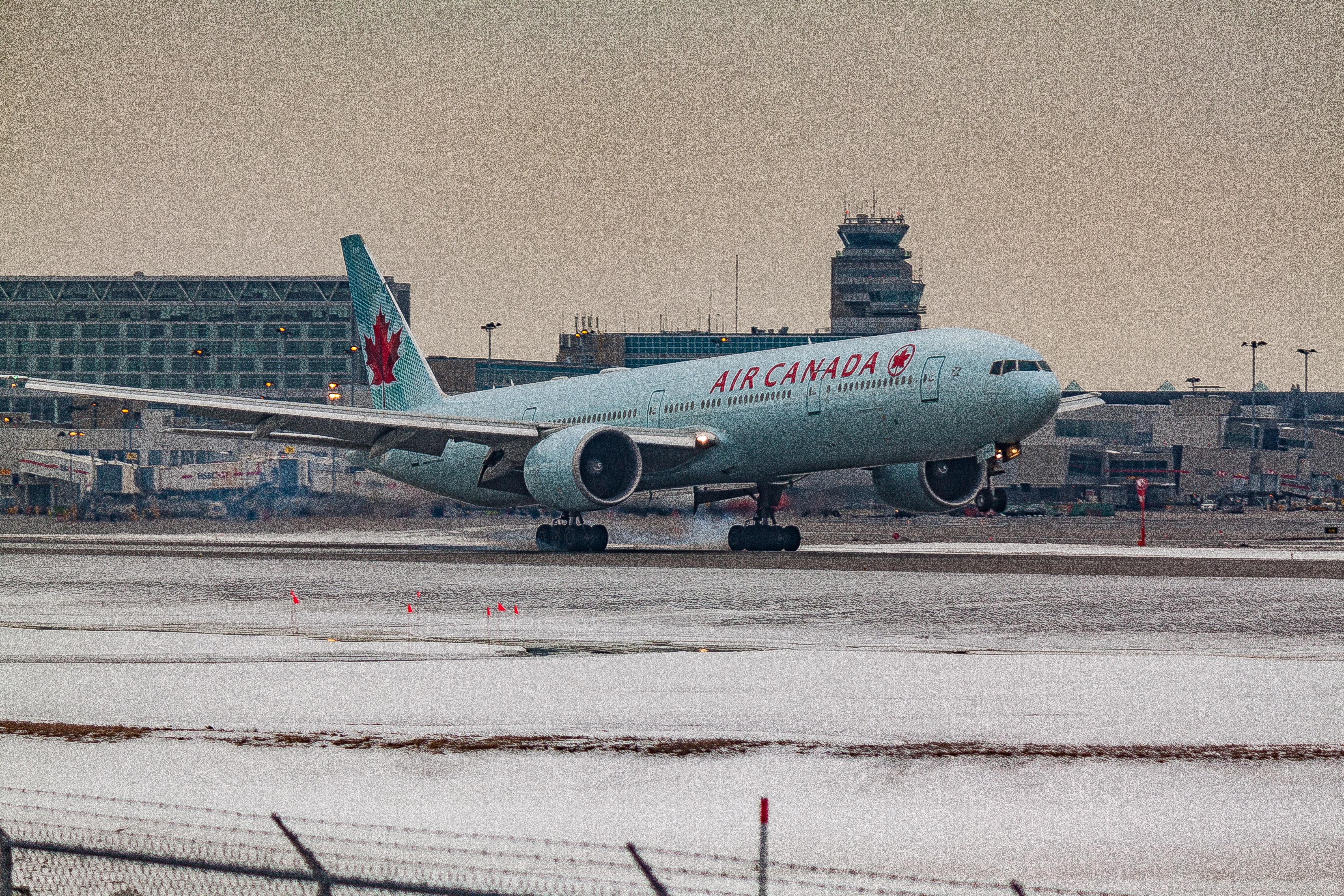
37
IMMIGRATION
Canada has a long history of immigration. Millions of people from all over the world have chosen, and continue to choose, Canada as their new home. In 2021, more than 8.3 million people, or almost one-quarter (23.0%) of the population, were, or had ever been, a landed immigrant or permanent resident in Canada.
Immigrants come from many different countries, bringing with them their cultural, ethnic, linguistic and religious heritage. In the past, the majority of immigrants in Canada came from Europe. However, over the past 50 years, the share of new immigrants from Europe has declined, with the share of new immigrants who were born in Asia (including the Middle East) increasing. Over time, Asia has become the top source region of new immigrants, and this trend continued in 2021. The share of new immigrants from Africa also increased. Together, immigrants, Indigenous people—who have walked this land for thousands of years, before Europeans settled here—and their descendants have helped shape Canada as it is known today.
From 2016 to 2021, Canada's population living in private households grew by 5.4%, and new, or recent, immigrants accounted for 71.1% of that growth.
Over 1.3 million recent immigrants were permanently admitted from January 1, 2016 to May 11, 2021, accounting for 15.9% of all immigrants living in Canada in 2021.
Immigration is expected to continue to increase in the decades to come. According to Statistics Canada's recent population projections, immigrants could represent from 29.1% to 34.0% of the total population by 2041.

In Canada, immigrants are selected according to three broad objectives: to enhance and promote economic development, to reunite families, and to fulfill the country's international obligations and uphold its humanitarian tradition.
Immigrants admitted under the economic category are selected based upon their potential economic contribution to meet labor market needs, or to create economic opportunities by owning, operating or investing in a business or through self-employment. In 2021, more than half (56.3%) of recent immigrants living in Canada were admitted under the economic category, either as the principal applicant or the dependent.
38
Why invest your future by immigrating to Canada?
• Start your new life in the largest immigration country worldwide
Since its founding, Canada has welcomed immigrants who implanted a variety of languages, cultures, and a belief in peace and togetherness.
• Immigrants make about 22% of the Canadian population
The majority of citizens born outside of the nation reside in the metropolitan areas of the Canadian provinces of Ontario, British Columbia, Quebec, and Alberta. Immigrants make up half of the populations of Toronto, Vancouver, and Montreal, (the three major Canadian cities.)
• Receive numerous free services as a newcomer
Numerous free programs that assist newcomers in settling in and adjusting to Canadian society are provided by the federal, provincial, and several non-governmental organizations.

• Live in a Country with a robust economy and plenty of prosperity
Due to its worldwide commercial framework, Canada has the tenth-largest economy and ninth-largest consumer market in the world. Inflation in Canada is low and constant, and the country's unemployment rate is below 7%.
• Reside in a peaceful nation
Canada is a desirable place for foreigners to reside because of its low crime rate and secure environment.
39
• Live in natural and green places to feel pleasure and calmness
Canada's geography varies by area and has grasslands, continental, oceanic, and Mediterranean landscapes and climates.
Even Canada's largest cities are designed to be peaceful, contemporary, and contain natural living spaces.
• Take advantage of the open market
Numerous work prospects for immigrants are created by economic freedom, equitable income distribution, and the demand for a young population.
• Feel Secured
According to the Canadian Charter of Rights, everyone who is physically present in Canada is protected.
• Live in natural and green places to feel pleasure and calmness
Canada's geography varies by area and has grasslands, continental, oceanic, and Mediterranean landscapes and climates.

Even Canada's largest cities are designed to be peaceful, contemporary, and contain natural living spaces.
• Take advantage of the open market
Numerous work prospects for immigrants are created by economic freedom, equitable income distribution, and the demand for a young population.
• Feel Secured
According to the Canadian Charter of Rights, everyone who is physically present in Canada is protected.
Specific Reasons to Move to Canada in 2023 with your family
• Political stability
•
A publicly financed universal healthcare system
• Canada's Economy is Booming
• Provides a Top-Notch education system
• Diversity
• One of the safest countries in the world
• Lowest level of discrimination
• It takes only 3 years to become a citizen
• Immigrants are dealt with as Canadians, you are a human who have rights and it will be fulfilled
40
DEMOGRAPHICS
POPULATION
In 2021/2022, Canada's population grew by a record 703,404 people (+1.8%) to reach an estimated 38,929,902 on July 1, 2022. This surpasses the preceding high observed a year before the COVID-19 pandemic (2018/2019), when the population grew by 536,146 people (+1.4%).
Canada welcomed 492,984 immigrants in 2021/2022 and saw an increase in the number of non-permanent residents (+205,238), both of which are record highs since comparable records became available in 1971/1972.
DIVERSITY
Canada is known for its ethnocultural and religious diversity, a characteristic of the country valued by the vast majority of Canadians. According to the 2020 General Social Survey, 92.0% of the population aged 15 and older agreed that ethnic or cultural diversity is a Canadian value. Everyone plays a fundamental role: you, your parents, your grandparents and your ancestors all contribute to shape the diverse landscape of the country.
More than 450 ethnic or cultural origins were reported in the 2021 Census. The top origins reported by Canada's population, alone or with other origins, were "Canadian" (5.7 million people), "English" (5.3 million), "Irish" (4.4 million), "Scottish" (4.4 million) and "French" (4.0 million).
LANGUAEG
English is the first official language spoken by just over three in four Canadians. This proportion increased from 74.8% in 2016 to 75.5% in 2021.
French is the first official language spoken by an increasing number of Canadians, but the proportion fell from 22.2% in 2016 to 21.4% in 2021.
From 2016 to 2021, the number of Canadians who spoke predominantly French at home rose in Quebec, British Columbia and Yukon, but decreased in the other provinces and territories.
The proportion of Canadians who spoke predominantly French at home decreased in all the provinces and territories, except Yukon.
41
Canada's publicly funded health care system is dynamic--reforms have been made over the past four decades and will continue in response to changes within medicine and throughout society. The basics, however, remain the same--universal coverage for medically necessary health care services provided on the basis of need, rather than the ability to pay.
The basic values of fairness and equity that are demonstrated by the willingness of Canadians to share resources and responsibility are displayed in Canada's health care system, and have been reflected in the modifications and major reforms made to the system since its inception. The system has been and continues to be modified as the country's population and circumstances change, and as the nature of health care itself evolves.
When Canadians need health care, they most often turn to primary health care services, which are the first point of contact with the health care system. In general, primary health care serves a dual function. First, it provides direct provision of first-contact health care services. Second, it coordinates patients' health care services to ensure continuity of care and ease of movement across the health care system when more specialized services are needed (e.g., from specialists or in hospitals).
Doctors in private practice are generally paid through fee-for-service schedules that itemize each service and pay a fee to the doctor for each service rendered. These are negotiated between each provincial and territorial government and the medical professions in their respective jurisdictions. Those in other practice settings, such as clinics, community health centers and group practices, are more likely to be paid through an alternative payment scheme, such as salaries or a blended payment (e.g., fee-for-service payments plus incentives for providing certain services such as the enhanced management of chronic diseases). Nurses and other health professionals are generally paid salaries that are negotiated between their unions and their employers

42
EDUCATUION
Canada has a strong and well-funded system of public education, largely managed provincially. Consequently, some aspects of the education system can vary between provinces. However, as education is overseen by the federal government, the standard of education remains consistently high throughout the country.
Primary Education
Also known as elementary school, this level runs from Kindergarten or Grade 1 (ages six to seven) and runs through to Grade 8 (ages 13 to 14). The school year normally runs from September through to the following June.
Secondary Education
Also known as high school, this level runs from Grade 9 (ages 14 to 15) to Grade 12 (ages 17 to 18). Ontario has a Grade 12+. In Quebec, students attend high school until the age of 16.They may then proceed to CEGEP, a publicly-funded two-year college where students may pursue either a university preparation diploma, or a vocational diploma.
Post-secondary Education
Canada has a wide network of colleges and universities, offering some of the best postsecondary education worldwide.
Canada is now one of the world's leading destinations for international students with over 600,000 students from all over the world. Research shows that international students are attracted to Canada for the following reasons:
• High quality of education offered by Canadian schools
• Canada offers international students with opportunities to work during and after their studies, and transition to permanent residence
• Opportunities to study in English and/or French
• Safety and security
• Multicultural society
Universities across Canada offer comparable levels of high-quality education. The reason for this is that Canada promotes equity within its education system, meaning that it strives to ensure all students get the best possible education possible, irrespective of which institution that they go to
The top university in Canada once again this year is the University of Toronto in joint 25th worldwide. The university rose four places in this year’s rankings and earns high scores across most of the indicators, particularly academic reputation, where it ranks 15th worldwide.
43



Berhan Immigration and Settlement Services Inc Meet Our Immigration professionals Berhan Immigration and Settlement Services is an immigration consulting firm with two locations in London, Ontario and Woodstock, Ontario. We provide our clients with a comprehensive range of immigration and citizenship services to help them with their immigration journey. YERUSALEM BERHANE Our immigration consultant, is licensed College of Immigration and Citizenship Consultants (CICC) and governed by the respective Code of Conduct intended to protect clients.; certified interpreter of Amharic and Tigringna; and boasts over 20 yearsexperienceworkingwithimmigrantsand refugees. In addition to professional service and client protection, we also provide the following advantages to our clients aimed at providing a relaxed and stress-freeexperience. 44 536 Queens Avenue, Suite 101 London, ON N6B 1Y8 225 Main Street, Woodstock , ON +1 (519) 868-4352 info@berhanimmigration.com www.berhanimmigration.com

45

46
CANADA LAND TYPES
• The first is vacant land, which is land that usually exists within a municipality and has some existing utility services such as power, water, and septic, and is therefore prime for development. As a result, vacant land can be a bit more expensive than other plots.
• The second type is raw land. As opposed to vacant land, raw land is almost entirely undeveloped and is usually found in more remote areas. There will be no utility connections, and there may not even be road access. Naturally, this offers great potential but also higher costs of development, and these pieces of land are a bit cheaper.
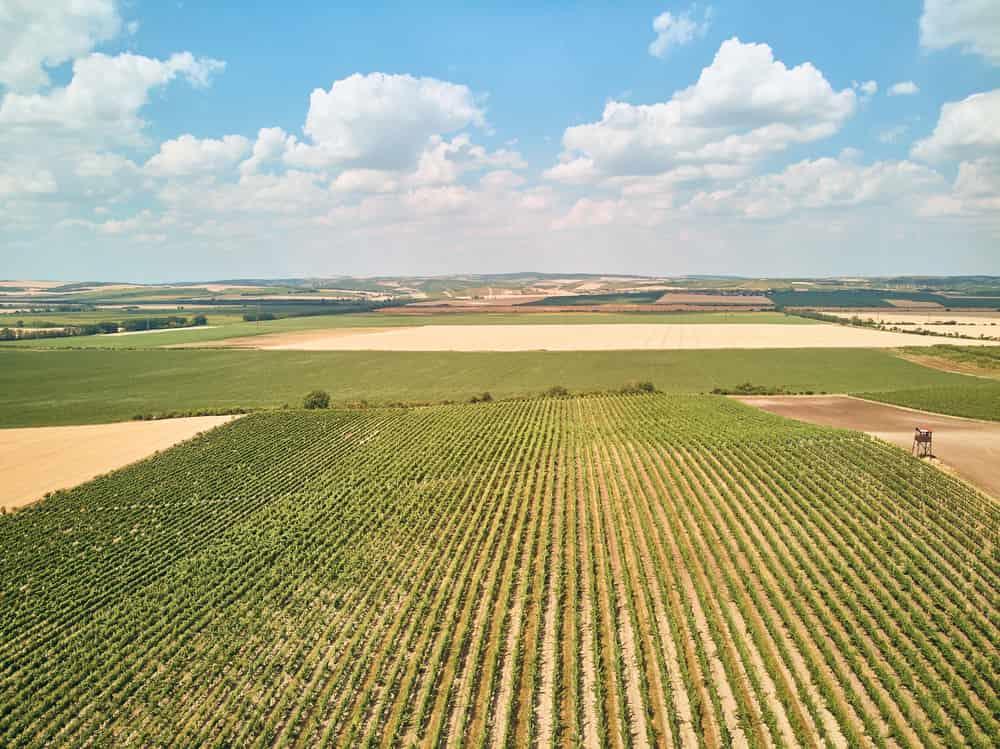
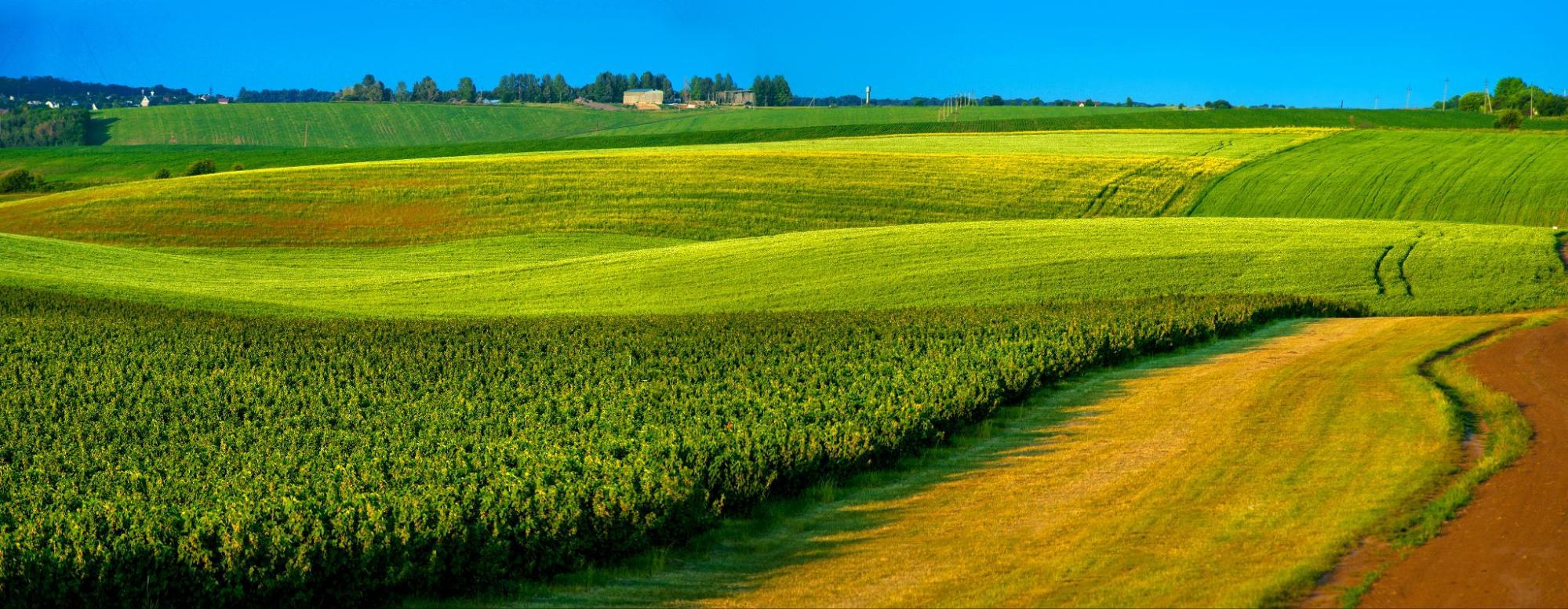
• The final type of land in Ontario is Crown land, which is land owned and managed by the provincial government. In Ontario, 87% of our province is classified as Crown land. Crown land is primarily found in the North, with little Crown land existing south of Sudbury.

47
Agriculture
Canada is one of the largest agricultural producers and exporters in the world. As with other developed nations, the proportion of the population agriculture employed and agricultural GDP as a percentage of the national GDP fell dramatically over the 20th century, but it remains an important element of the Canadian economy. A wide range of agriculture is practiced in Canada, from sprawling wheat fields of the prairies to summer produce of the Okanagan valley
Canadian primary agriculture is an economic driver highly diversified across the country: 189,874 farms. farms cover 62.2 million hectares or 6.3% of Canada's land area. concentrated across the Prairies, Quebec and Southern Ontario
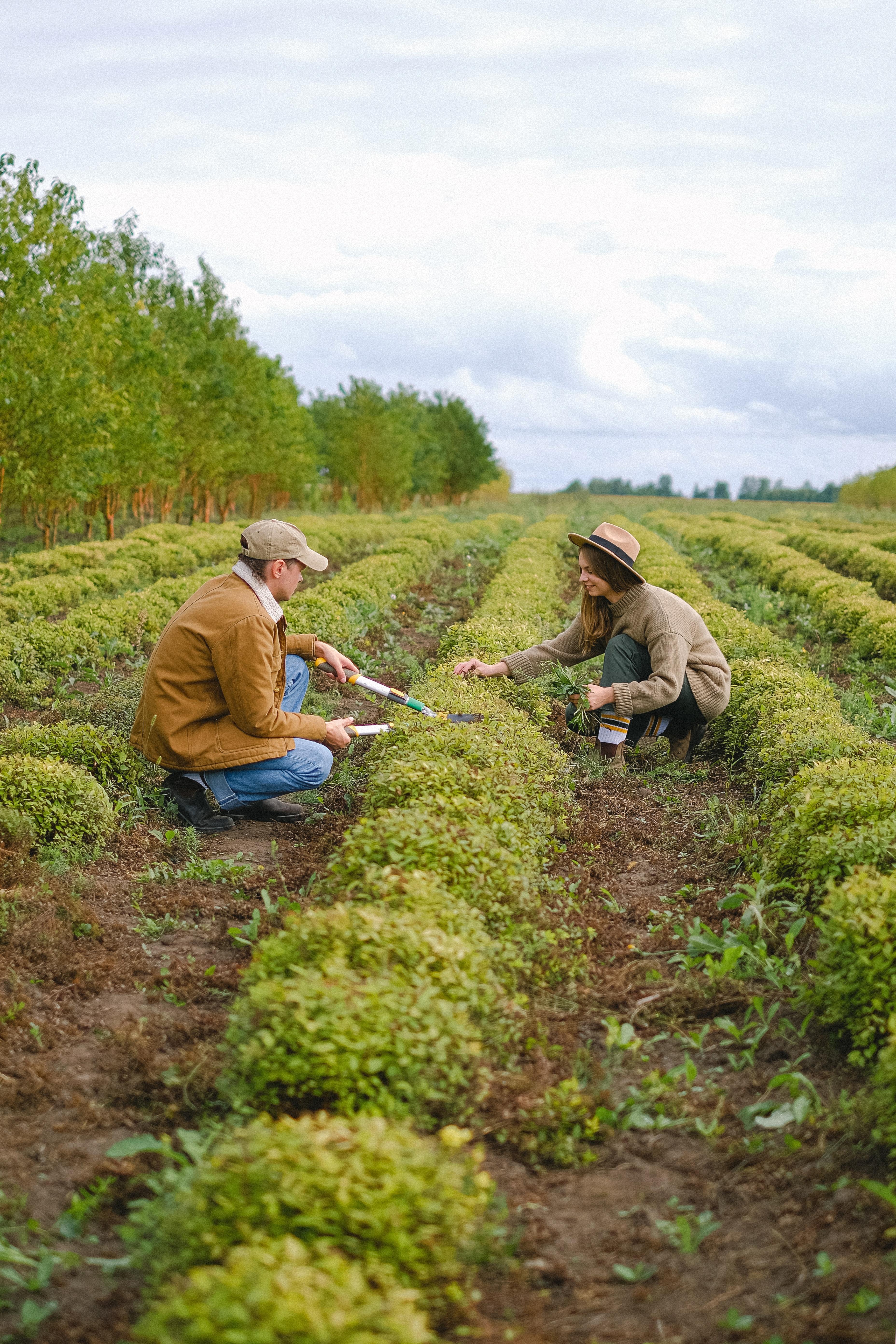
Canada has the third-highest total estimated value of natural resources, valued at US$33.98 trillion in 2019. It has the world's third-largest proven oil reserves and is the fourth-largest exporter of crude oil
Agriculture in Provinces Province
Percent
Saskatchewan 46.8
Alberta 26.8
Manitoba 12.7
Ontario 9.0
48

49
CONSTRUCTION & INFRASTRUCTURE
CANADA SECTOR STATS
• Canada is ranked 14th in the world terms of construction sales by top ranking global construction firms.
• The GDP of the Canada’s construction industry was C$141.6 billion in 2018, representing 7.3% of Canada’s total GDP.
• Over1.7millionworkersarepartoftheconstructionindustrylaborforce,makingup9.2% ofCanada’stotallaborforce.
• There are over 400,000 registered businesses working in Canada’s construction industry, making up 10.8% of Canada’s total businesses.
CONSTRUCTION & INFRASTRUCTURE IN CANADA
Canada’s construction sector is on an upswing, following the country’s economy as a whole. With a growing population, an active workforce, and a thriving business environment, there is constant demand to build new and renewed residential, commercial, industrial, and institutional developments.
All major building types have seen almost uninterrupted growth over the past two decades in Canada. Within the last five years alone, the value of total building permits has grown by 4.3 per cent.
TYPE PERMIT VALUES 2018 ’13—’18 CAGR
Residential C$62.8 Billion 5.4%
Commercial C$21.5 Billion 2.7%
Industrial C$72.9 Billion 5.2%
Institutional C$80.2 Billion 0.4%
Total C$99.7 Billion 4.3%
50
OPPORTUNITIES FOR COMPANIES IN
•
CANADA:
Partnerships for Mixed-Use, High-Density Development
•
Green & Smart Developments
• Innovative Public Space
• Investing in Revenue-Generating Canadian Infrastructure
Some of the greatest opportunities for the sector are in Canada’s major urban centers, particularly with highdensity residential and mixed-use projects to combat issues of urban sprawl and affordability. Other opportunities exist in innovative public space development as well as green and smart commercial development.
The need for new and improved infrastructure is an essential driver of Canada’s construction sector. Through the current Investing in Canada Plan, the Government of Canada has committed to C$180.0 billion over 12 years across five priority infrastructure streams: public transit, green building, social infrastructure, trade and transportation, and rural and northern communities. The objectives of this plan are to create long-term economic growth, support a low carbon, green economy, and build inclusive communities.
The Canada Infrastructure Bank is another initiative that assists provincial, municipal, and Indigenous communities in building infrastructure across the country. The crown corporation was created in 2017 to address a gap in the
market between privately-funded projects and government-funded infrastructure, which is procured traditionally or as a public-private partnership. The Bank aims to invest up to C$35.0 billion alongside private and institutional partners, creating opportunities for those interested in new, revenue-generating infrastructure projects in Canada.
FeatureProject:TorontoWaterfront RevitalizationInitiative
The Toronto Waterfront Revitalization Initiative aims to transform 800 hectares of brown-field lands on Toronto’s waterfront into beautiful, accessible, and sustainable mixed-use communities. This includes the creation of 40,000 residential units, one million square meters of commercial property, and 300 hectares of parks and dynamic public spaces.
The project is led by Waterfront Toronto, a not-forprofit created in 2001 by the Government of Canada, the Government of Ontario, and the City of Toronto. With a mandate of 25 years and a projection of C$30 billion in public and private funding, the Toronto Waterfront Revitalization Initiative is one of the largest infrastructure projects in North America and one of the largest waterfront re-development initiatives undertaken in the world. A primary objective is to leverage the infrastructure project to deliver key economic and social benefits that enable Toronto to compete aggressively with other top tier global cities for investment, jobs, and people. To do this, Waterfront Toronto brings together the most innovative approaches to real estate development, urban design, and advanced technology infrastructure.

51
Common Structural Types Of Houses
People live in homes of all different shapes and sizes. We’ve compiled a list of the most common structural house types below to help you better define what you’re looking for in your home search.
• Single-Family Homes
Single-family homes are freestanding residential buildings. A single-family home doesn’t share a wall with another building. A single-family home owner typically owns the building and the land that the building sits on.
• Multifamily Homes
A multifamily home is a residential property that is comprised of more than one housing unit. Each unit will likely have their own main entrance, kitchen space and bathroom.
• Apartments
An apartment is a unit inside of a building structure comprised of similarly styled individual units. A tenant rents an apartment from a landlord, so the tenant isn’t building any equity while paying rent. While lease agreements vary, many landlords are responsible for making repairs and upgrades to the leased unit. Some apartment communities include common area amenities like a laundry room, gym or pool.
•
Semi-Detached Home
A semi-detached home is a single-family dwelling that shares one common wall. Unlike a town-home, where you may have a neighbor on both sides of your home, semi-detached homes share only one wall, and the home design is typically a mirror of each dwelling.
•
Town-homes
Town-homes are multi-floor homes with their own entrance, bathroom and kitchen space. Town-homes share two walls with neighbors unless the townhome is located at the end of a building. In some markets, the terms “town-home” and “townhouse” are used interchangeably.
• Condominiums (Condos)
Condominiums, or condo for short, are buildings made up of individual units that are owned. They can look and feel like an apartment building or community. Unlike an apartment, a condo owner owns the interior space of their unit and is building equity with every mortgage payment. The common area is usually managed by a homeowners association, with fees being assessed to homeowners for common area expenses.
52
Projects


Our
53
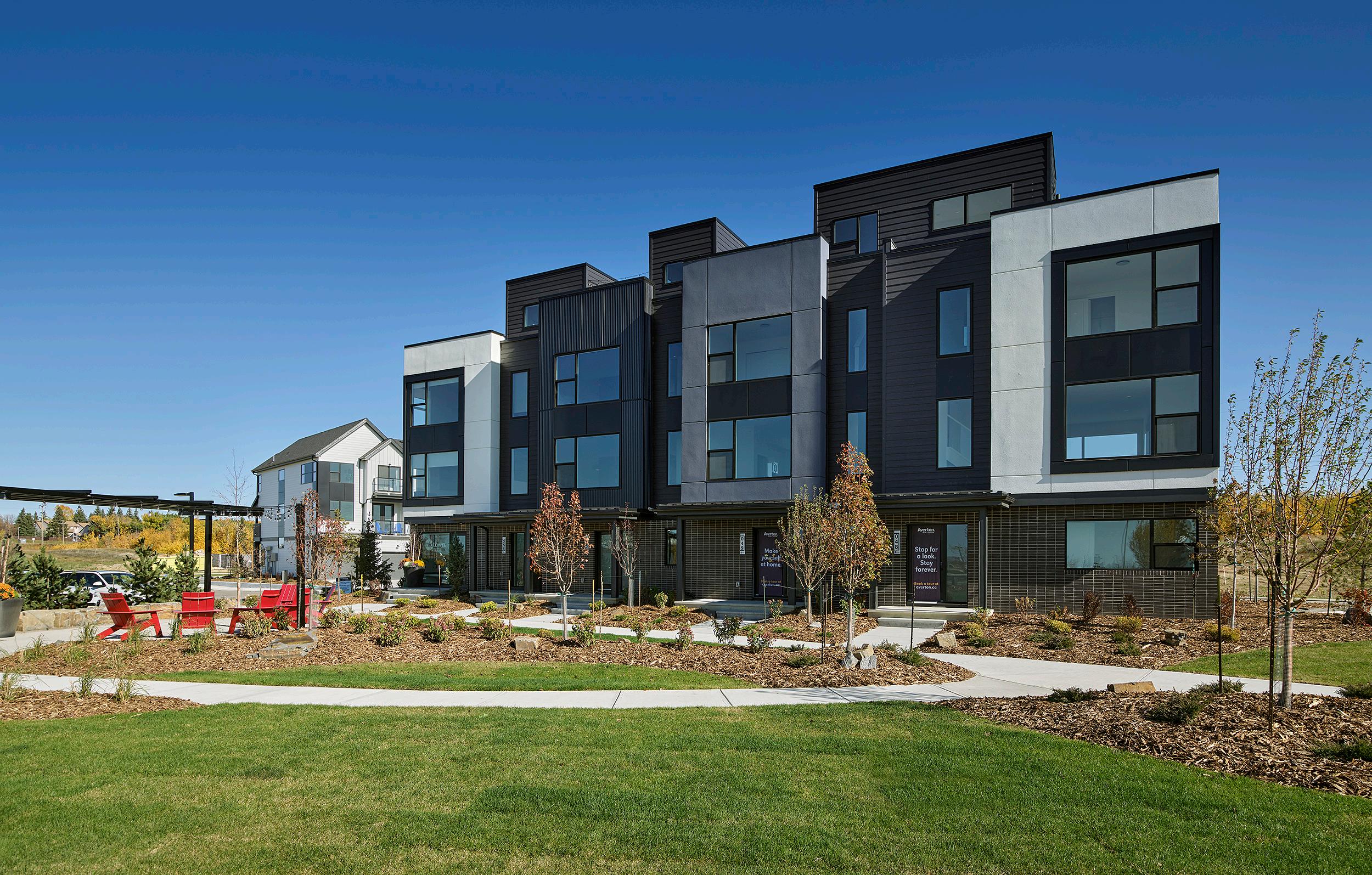
01 02 03 No Provincial Sales Tax or Land Transfer Tax 04 05 No Rent Controls Highest Per Capita Income in Canada Lowest Personal (10%) and Corporate (8%) Tax Rates in Canada Youngest Average Population and Highest Population Growth Rate in Canada 01 2 Year Rental Guarantee Positive Cash Flow Property Management Services Included ROI Projections of up to 12% Annually Most Desirable Municipality in Alberta the facts speak for themselveshassle free investment 01 02 03 04 05 Invest in the Best New Community of 2023 54
HOME IS WHERE THE HEART IS.
Live in a new, vibrant, multi-generational neighbourhood.
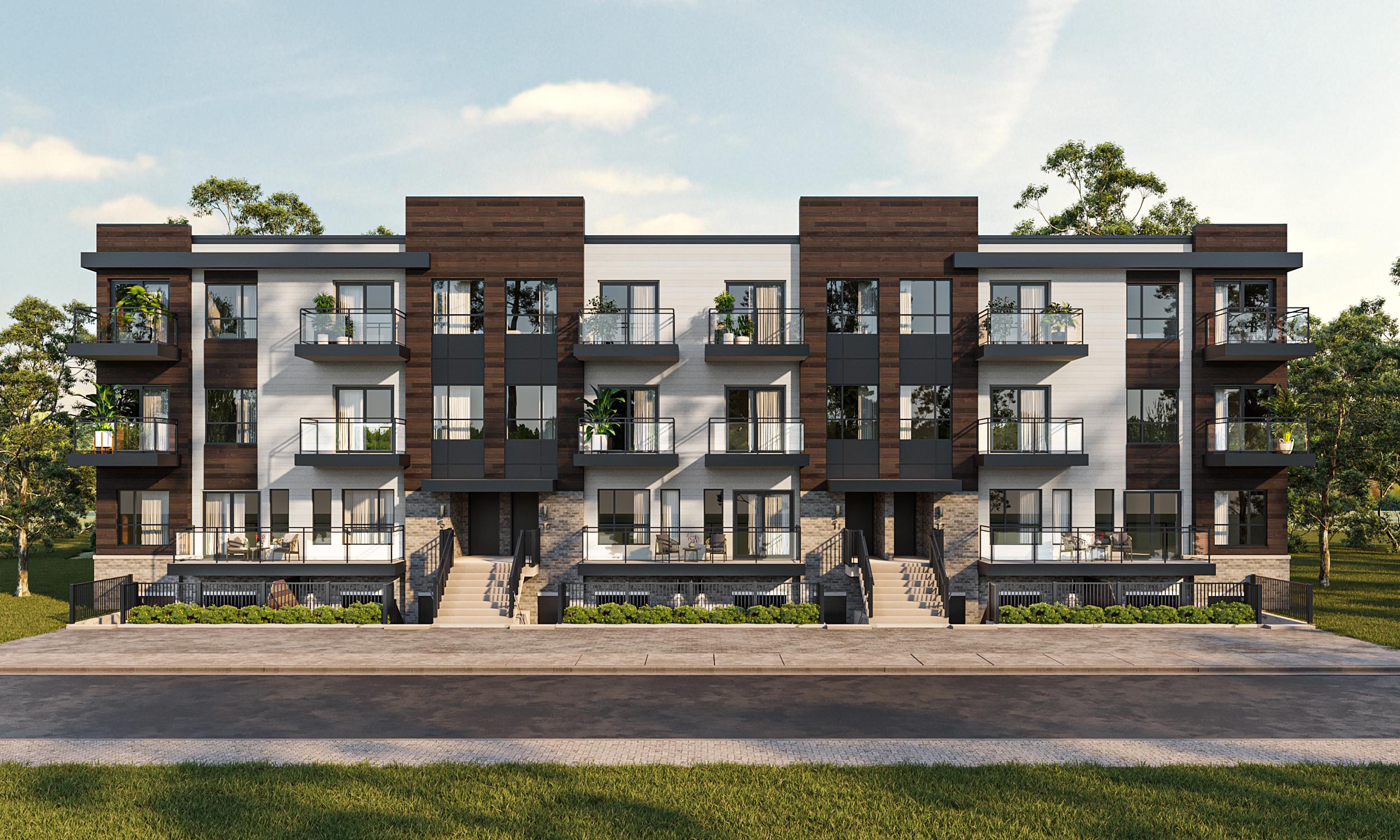
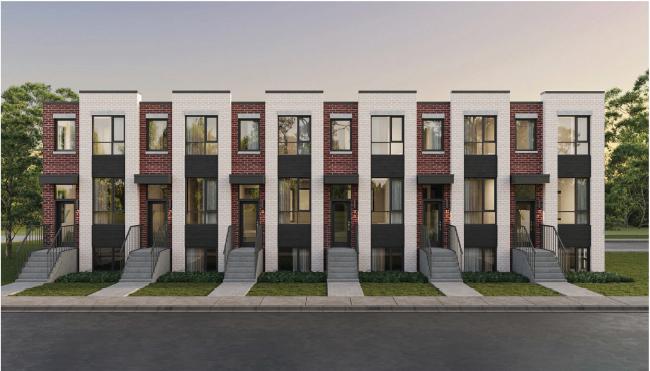
The Heartlake Collection at UPtowns™ is the final opportunity to live in North Brampton's most progressive and contemporary new townhome community. This master-planned community is situated on 22-acres and surrounded by natural green space. Featuring a bold collection of traditional, rear lane, back-to-back and stacked townhomes inspired by contemporary urban architecture and progressive modern interior design.

55
•Oversized, spacious kitchens for entertainin
•Gleaming quartz kitchen counter top
• Quality engineered prefinished strip hardwood flooring in natural finish
• Choice of 3 & 4 bedroom designs to meet your family’s needs
•Central air conditioning included
•Traditional oak staircase
• Soaring 9’ ceilings on the main and upper floor, smooth ceilings throughout
•Large walk-in closet in the main bedroo
• Spa inspired main ensuites and frameless glass shower enclosure
• Flexible main and second floor plan options to suit your lifestyle


• Drop Zone entry way feature with storage shelves and hanging hooks
•Direct rear yard acces
• Maintenance free, elegant brick and stone exterior finishes
•Designed by an award winning architec
•Built by an award winning builde
• 8” Wood block party wall in between townhouse units to maximize soundproofing
• Quality furniture finish kitchen cabinetry with extended upper cabinets
• Designer selected porcelain floor tiles in kitchen, bathrooms and laundry room
• Moen faucets for all bathroom vanities and shower stalls
• Family Centre with built-in desk and drawer in quality furniture finish cabinetry, including electrical outlet and integrated USB port
• 6 Panel Square doors with Colonial 2 3/4” casing and 4” baseboards
• Maintenance-free, Low-E Argon vinyl clad casement windows with coloured window trims and sashes, including patio slider carefully matched to complement the exterior
56
Distinct Exterior
• Contemporary exterior featuring designer brick and stone - with accent details based on the Bidding ton color palette
• Elegant, 8’ steel front door with brushed nickel hardware and a deadbolt lock
• Architecturally designed railings, balconies and privacy screens
• Low maintenance aluminum softs, eaves trough and downspouts
• Low-E Argon vinyl casement windows and patio doors
• Quiet and modern roll-up garage doors with two remotes
• Patios at ground-level and rooftop terraces
• Luxe home address plaque with unit number
Building Amenities
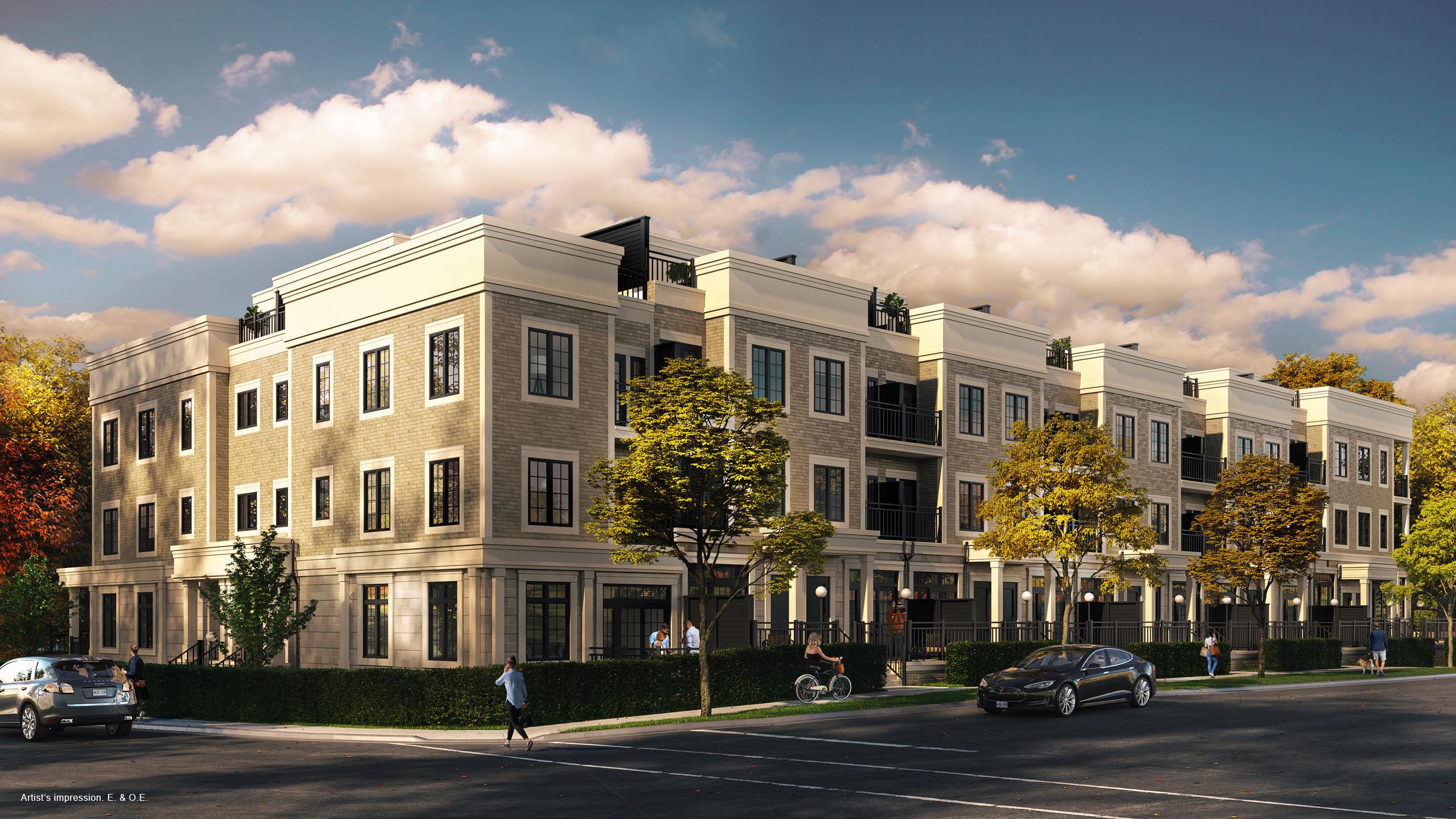
• Private rooftop terrace with exterior hose and gas line for future BBQ
• Electrical outlets on terrace level for outdoor entertainment
• Beautiful, long-lasting composite decking on terraces and balconies
• Professionally designed landscaping
• Private elevator with refined finishes that provides access to every level
• Convenient entry to all units from garage
• Basement-level storage available
• Two underground parking spaces per residence
• Visitor and outdoor bicycle parking available
57

LEASIDE BY THE NUMBERS PotentialROIofTheFrederick ROIwhenpurchasinginmajordevelopment –+200% BuildingscomingtoLeaside–+61 ResidentialunitscomingtoLeaside–+21,731 *Basedondatafromthepast5yearsandbasedonpricetrendsfromParklawn, LibertyVillage,CityPlace,andRegentPark Leasidevacancyrate–1.7% Yearoveryearperformance intheneighbourhood: Detached homes -+8.72% Condos - +16.84%. Growthbetween 2017and2021: Detached homes - +23.26% Condos - +56.08% *SourceMLSC11Octobereach year THEOPPORTUNITY 58
Your Motto is Who You Are.
Your Motto is living the authentic downtown life at Bloor and Dovercourt, where your unique individuality is valued in a community that navigates the city just outside your door. This is where it all comes together –the vibe, the easy subway access, the one-off coffee bars, the restos, the clubs, the art, the pulse, the beat of Toronto’s core with all its flavors and textures. This is Mot to.
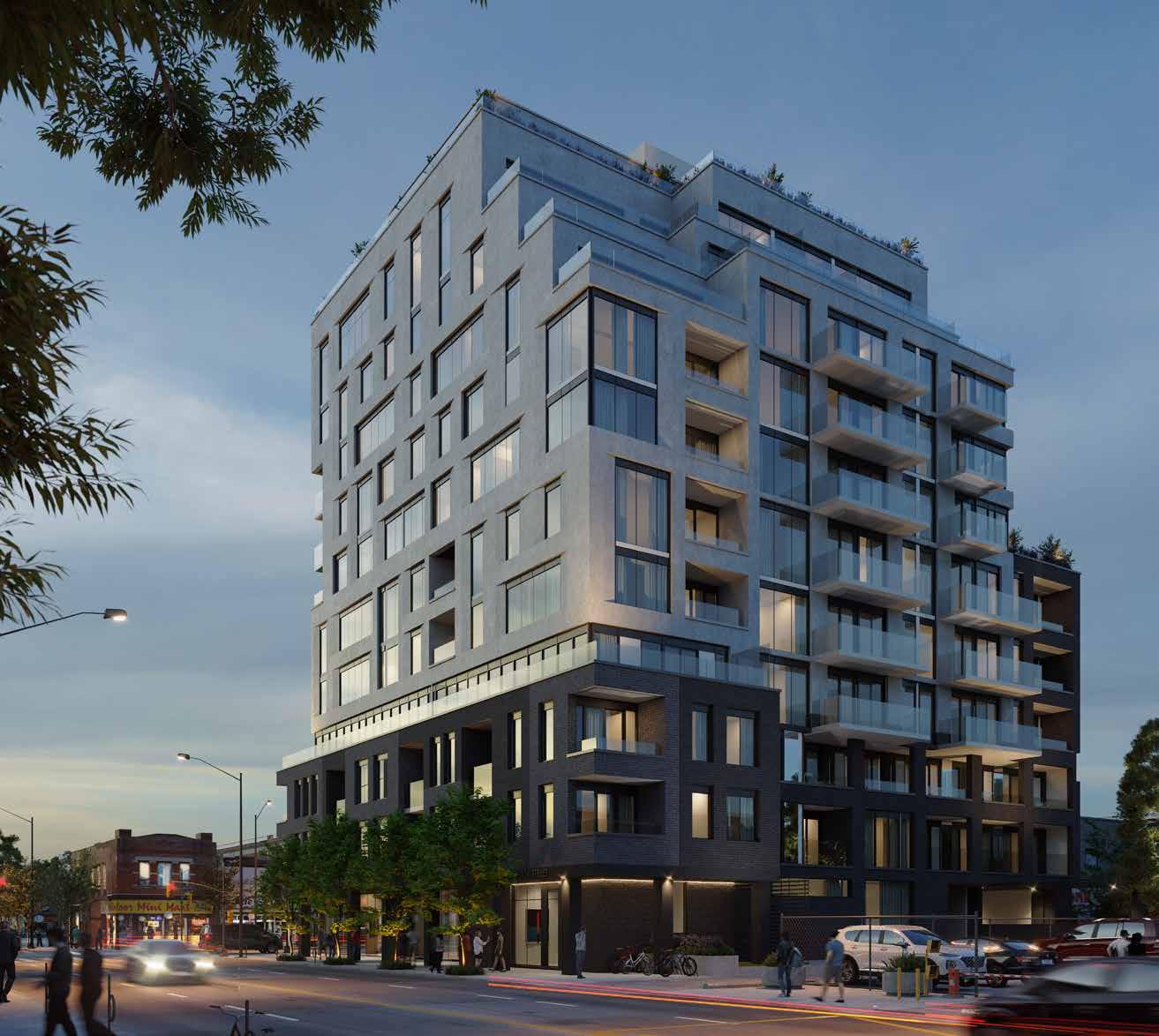

59
Natural spaces sculpted by time. An urban sensibility designed for the here and now.

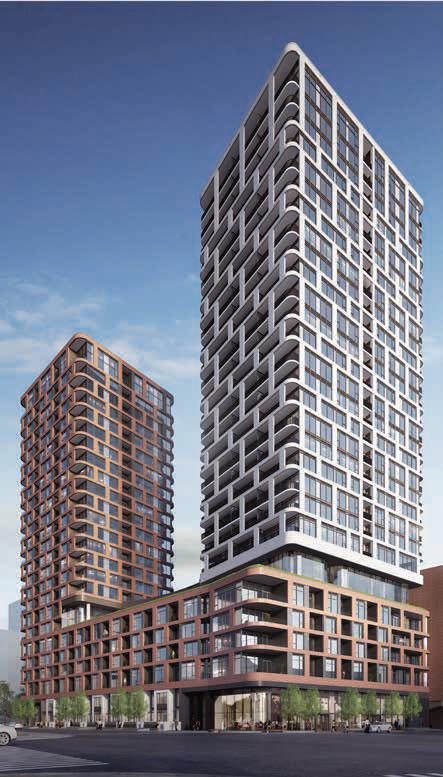
Today, connectivity is king. And that’s what makes Downtown Markham such a coveted location … because here, you’re connected to all things urban. Get anywhere and everywhere, via nearby Highways 7, 404 and 407. VIVA rapid transit and GO Transit are integrated seamlessly into the community; these run every 5 to 15 minutes, making it a breeze to connect to GTA neighbourhoods and well beyond.

60
30 Bristol Rd. E. Mississauga Units 577
Amenity Space

Transit
Street transit stop less than a 1 min walk away. Rail transit stop less than 3 km away
Future Hurontario LRT
Bristol Station will be adjacent to Above Condos, making commuting by transit even easier Completion date anticipated for fall 2024
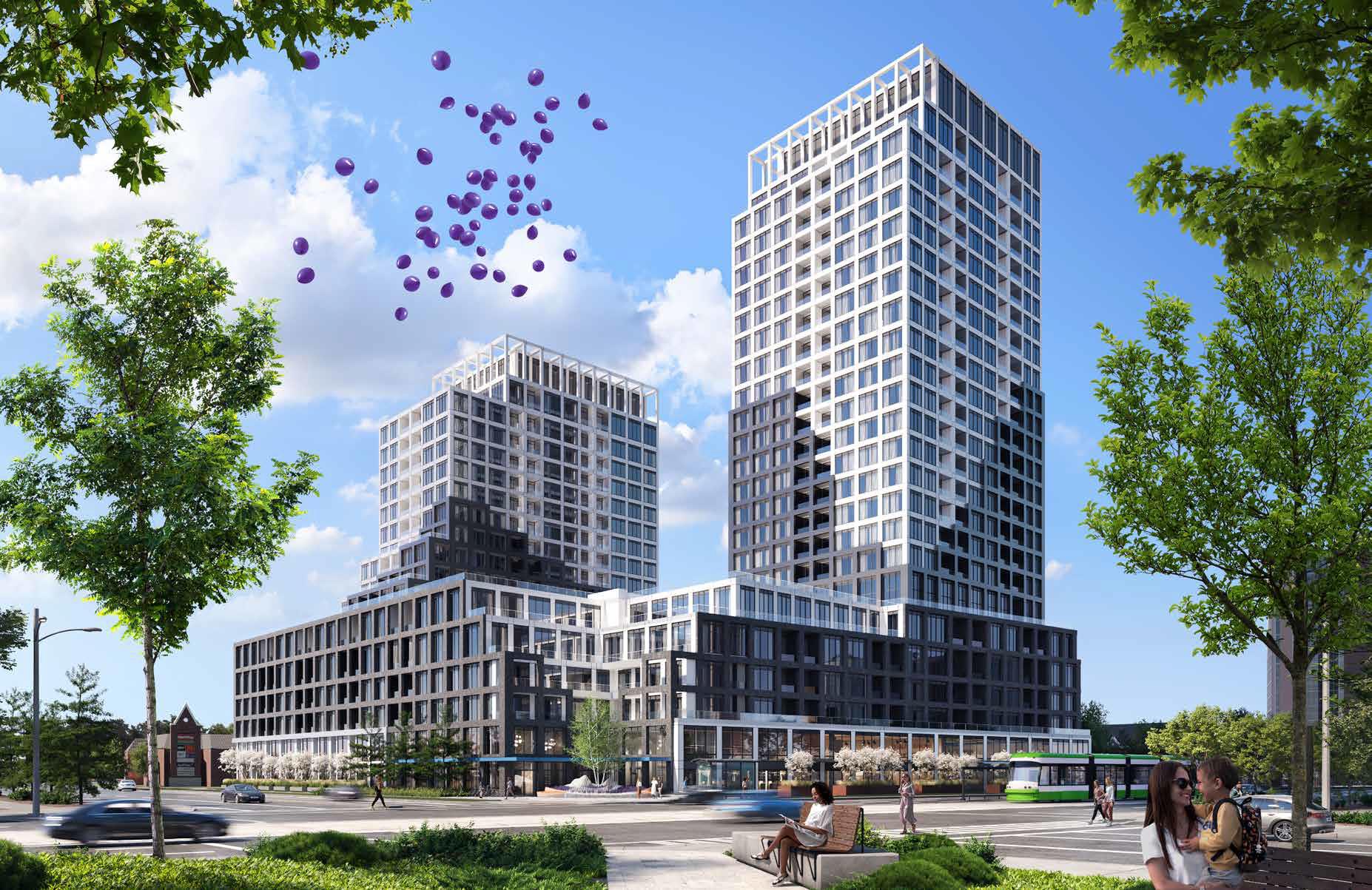
18km Line
19 stops, travel through 2 urban growth centres and connect to major transit systems including GO Transit, the Mississauga Transitway, Brampton Transit, ZUM, and MiWay
Location
Storeys Tower 1 – 23 Storeys Tower 2 – 17 Storeys
61
Over 40,000 sqft of outdoor and indoor amenities Schools 5 Public schools, 6 Catholic schools, and 2 Private schools nearby Parks & Rec 5 sports fields, 3 ball diamonds, and 7 other facilities within a 20 min walk
About Guelph
Why Invest?
Downtown Guelph $650,000 In the City: $684,605 (June 2022)
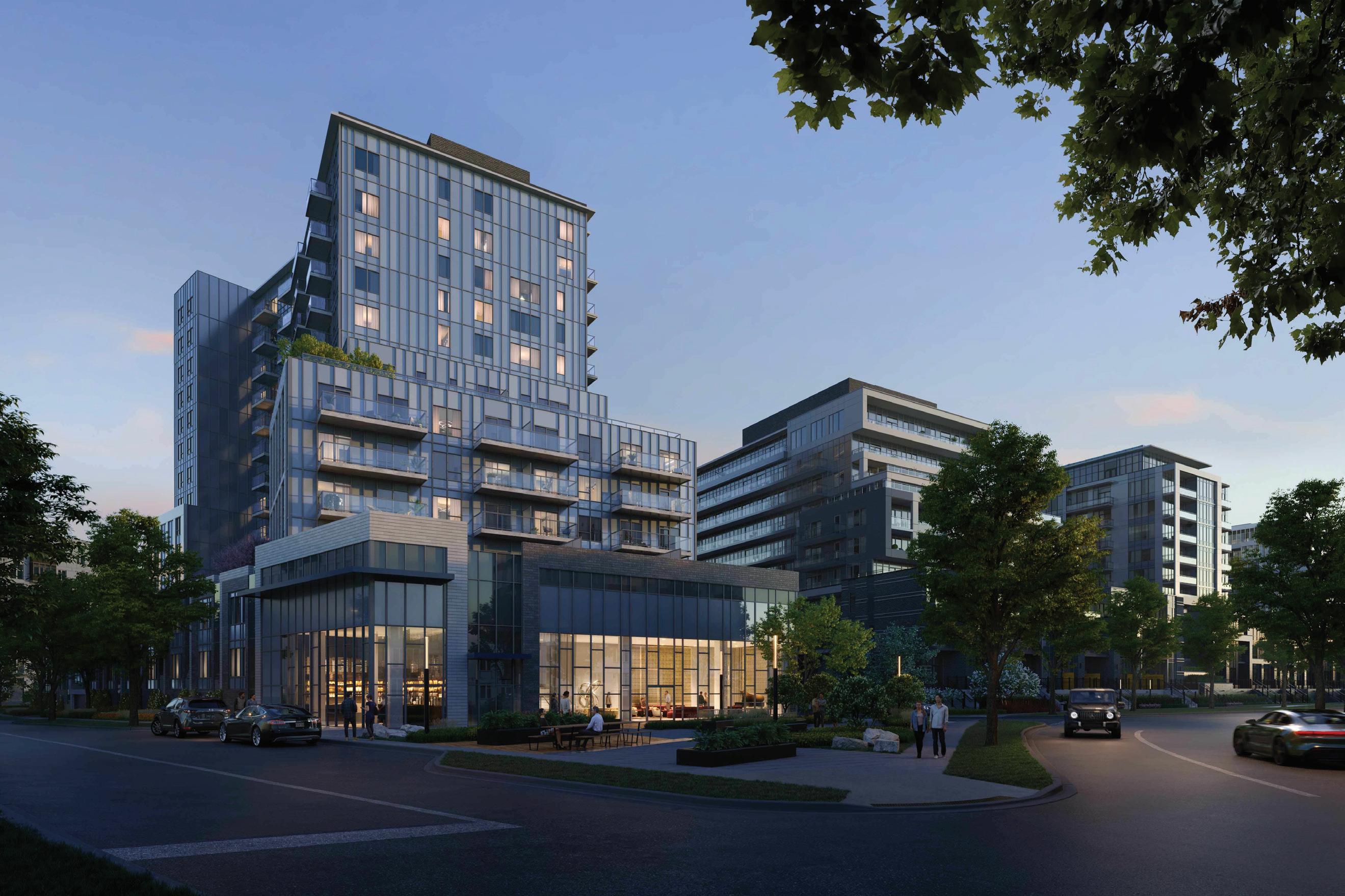

Resale (in the City): $704,199 Average days on market: 15 (January-June 2022)
Average Rental Price (April-June 2022) 1 Bed: $2,000 1+Den: $2,100 2+Den: $2,500
25.5% increase in prices year over
The
Metalworks
BIKING SCORE 95
Phase 4 of award-winning The Metalworks Prices start from high $400,000 Smart home system within building and suites; integrated with your smart devices Green, energy e cient, LED, low VOC Functional building amenities with luxurious design
Guelph’s Real Estate Market
year
Population: 149,772 Ave. Houshold Income: $114,289 Annual Population Growth: 2% (5th fastest in Canada) Ownership:
Average Prices (Condo/Apartment)
Price Growth (Condo/Apartment)
Education Hub 29,507 students* 5 minutes 15 minutes 24 minutes 37,884 students* 34 minutes 19,000 students* 30 minutes * Undergraduate and Graduate Students, 2021-22
67% Owned 33% Rented
Groceries 8 mins Downtown Core 5 mins GO Central Station 10 mins VIA Rail Canada 11 mins 62
Sources: REALM, Trillium West Real Estate Brokerage Quarterly Data Report, MLS
An
Source: GEO Warehouse, worldpopulationreview.com/world-cities/ guelph-population
Source: REALM
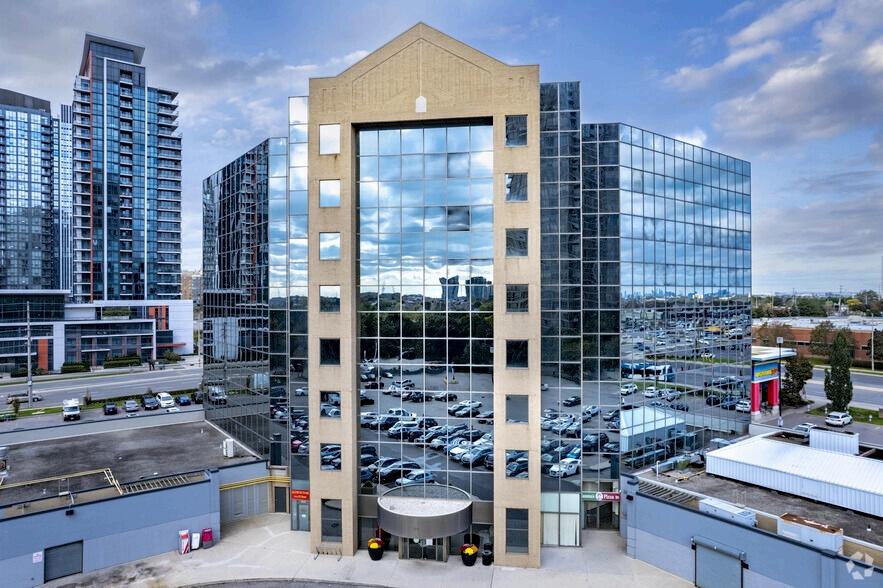

Canada Office : 30 Eglinton Ave W,Mississauga,ON Canada L5R 3E7 +1 647 564 4000 UAE Office : Amna Bin Nasr Building - Al Marar Area - Dubai # 14 +971 52 532 4802 Connect with us on Facebook and Instagram @pyramineinvestment. To learn more about our membership, sponsorship, and service options, please contact info@pyramineinvestment.com pyramineinvestment.com








































 Tricia Ironside-Chan Manager, CentralOffice
Stephanie Johnston DealsCo-ordinator, CentralOffice
Deann Archibald DealsCo-ordinator, WestOffice
Leah Samaniego DealsCo-ordinator, DowntownOffice
Melissa Ironside DealsCo-ordinator, CentralOffice
Mary Murray DealsManager, WestOffice
Mathew Aldred AgentServices, WestOffice
Abigail Roberts DealsCo-ordinator, CentralOffice
Kathryn Hume Manager, WestOffice
Lorna Brathwaite DealsCo-ordinator, WestOffice
Galilee Manaois DealsCo-ordinator, CentralOffice
Liana Yeganyan Accounting, CentralOffice
Alisha Rais DealsCo-ordinator, WestOffice
Janet Luong DealsCo-ordinator, CentralOffice
Munim Mushiq Accounting, CentralOffice
Stephanie Kelsey DealsCo-ordinator, WestOffice
Raenae Paton DealsCo-ordinator, CentralOffice
Kazi Islam Accounting, CentralOffice
Kendall MacDonald DealsCo-ordinator, WestOffice
Rowena Mirando DealsCo-ordinator, CentralOffice
Lorraine DeRose DealsCo-ordinator, WestOffice
Madison Leishman Graphic Designer, West Office
Carlos Salas Graphic Designer, Downtown Office
Yoon Kwon Graphic Designer, West Office
Tricia Ironside-Chan Manager, CentralOffice
Stephanie Johnston DealsCo-ordinator, CentralOffice
Deann Archibald DealsCo-ordinator, WestOffice
Leah Samaniego DealsCo-ordinator, DowntownOffice
Melissa Ironside DealsCo-ordinator, CentralOffice
Mary Murray DealsManager, WestOffice
Mathew Aldred AgentServices, WestOffice
Abigail Roberts DealsCo-ordinator, CentralOffice
Kathryn Hume Manager, WestOffice
Lorna Brathwaite DealsCo-ordinator, WestOffice
Galilee Manaois DealsCo-ordinator, CentralOffice
Liana Yeganyan Accounting, CentralOffice
Alisha Rais DealsCo-ordinator, WestOffice
Janet Luong DealsCo-ordinator, CentralOffice
Munim Mushiq Accounting, CentralOffice
Stephanie Kelsey DealsCo-ordinator, WestOffice
Raenae Paton DealsCo-ordinator, CentralOffice
Kazi Islam Accounting, CentralOffice
Kendall MacDonald DealsCo-ordinator, WestOffice
Rowena Mirando DealsCo-ordinator, CentralOffice
Lorraine DeRose DealsCo-ordinator, WestOffice
Madison Leishman Graphic Designer, West Office
Carlos Salas Graphic Designer, Downtown Office
Yoon Kwon Graphic Designer, West Office




















































